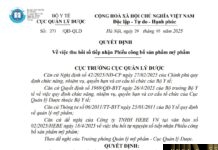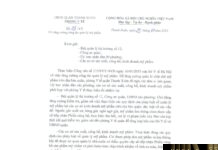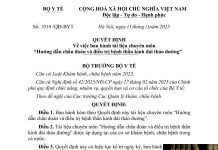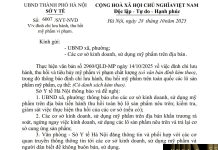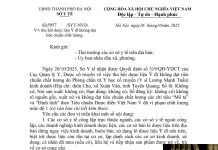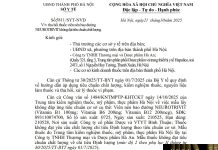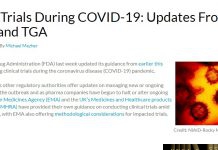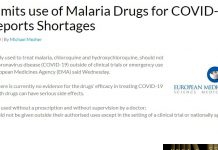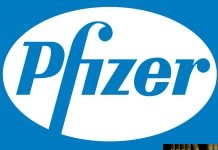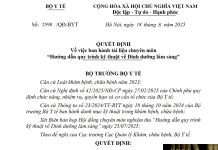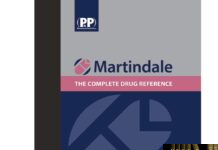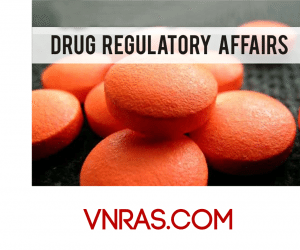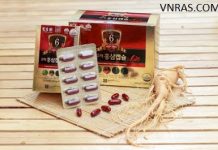Asean Agreement on Medical Device Directive
The Governments of Brunei Darussalam, the Kingdom of Cambodia, the Republic of Indonesia, the Lao People’s Democratic Republic, Malaysia, the Republic of the Union of Myanmar, the Republic of the Philippines, the Republic of Singapore, the Kingdom of Thailand and the Socialist Republic of Viet Nam, Member States of the Association of Southeast Asian Nations (ASEAN), hereinafter collectively referred to as “Member States” or singularly as “Member State”;
MINDFUL that in the year 1992, the ASEAN Heads of Government declared that an ASEAN Free Trade Area (AFTA) shall be established in the region and that in 1995, they agreed to accelerate its implementation to the year 2003;
NOTING the ASEAN Trade in Goods Agreement which entered into force on 17 May 2010 provides for cooperation to supplement and complement the liberalization of trade including, among others, the harmonization of standards, conformity assessment procedures and technical regulations as a means of reducing technical barriers to trade;
MINDFUL that the Declaration of ASEAN Concord II (Bali Concord II) adopted by the ASEAN Heads of Government during the 9th ASEAN Summit in Bali, Indonesia on 7 October 2003, commits ASEAN to deepen and broaden its internal economic integration and linkages, with the participation of the private sector, so as to realize an ASEAN Economic Community;
MINDFUL that the establishment of the ASEAN Economic Community has been accelerated from 2020 to 2015 which will create ASEAN as a single market and production base;
REITERATING their commitments to the Agreement on Technical Barriers to Trade of the World Trade Organization, which encourages the Contracting Parties to enter into negotiations for the conclusion of agreements for the mutual recognition of results of each other’s conformity assessment and mandates, among other matters, the elimination of unnecessary obstacles to trade including those relating to technical regulations;
RECALLING the ASEAN Framework Agreement for the Integration of Priority Sectors and the ASEAN Sectoral Integration Protocol for Healthcare signed on 29 November 2004 in Vientiane, Lao PDR; and
HAVING regard to the objectives of harmonized medical device regulations, common technical documents and the progress made in implementation.
HAVE AGREED as follows:
ARTICLE 1
GENERAL PROVISIONS
(1) Each Member State shall undertake all necessary measures to ensure that only medical devices which conform to the provisions of this ASEAN Agreement on Medical Device Directive (hereinafter referred to as “Agreement”) and its Annexes may be placed on the markets of that Member State.
(2) Subject to the provisions of this Agreement each Member State shall require that the person responsible for placing the medical device in that Member State or the authorized representative shall register the medical device with the Regulatory Authority of that Member State.
(3) Subject to the provisions of this Agreement, each Member State shall require that the person responsible for placing the medical device in that Member State or the authorized representative shall be licensed by the Regulatory Authority of that Member State before placing the medical device in that Member State.
ARTICLE 2
DEFINITIONS AND SCOPE
(1) This Agreement shall apply to medical devices and their accessories. For the purposes of this Agreement, accessories shall be treated as medical devices in their own right. Both medical devices and accessories shall hereinafter be referred to as devices. For the purpose of this Agreement, unless the context otherwise requires, the terms:
(a) “medical device” shall mean any instrument, apparatus, implement, machine, appliance, implant, in vitro reagent and calibrator, software, material or other similar or related article:
(i) intended by the product owner to be used, alone or in combination, for human beings for one or more of the specific purpose(s) of:
(a) diagnosis, prevention, monitoring, treatment or alleviation of disease;
(b) diagnosis, monitoring, treatment, alleviation of or compensation for an injury;
(c) investigation, replacement, modification, or support of the anatomy or of a physiological process;
(d) supporting or sustaining life;
(e) control of conception;
(f) disinfection of medical devices; and
(g) providing information for medical or diagnostic purposes by means of in vitro examination of specimens derived from the human body;
(II) which does not achieve its primary intended action in or on the human body by pharmacological, immunological or metabolic means, but which may be assisted in its intended function by such means.
(b) “accessory” means an article that is intended specifically by its product owner to be used together with a particular medical device to enable or assist that device to be used in accordance with its intended purpose.
(c) “adverse event” means either a malfunction or a deterioration in the characteristics or performance of a supplied medical device or use error, which either has caused or could have caused or contributed to death, or injury to health of patients or other persons.
(d) “authorized representative” means any person in a Member State who, explicitly designated by the product owner, acts and may be addressed by authorities and bodies in a Member State instead of the product owner with regard to the latter’s obligations under this Agreement, and relevant laws and regulations of the Member State
(e) “authorized distributor”, in relation to the placing on the market of a medical device, means any person who has been authorized by the product owner or authorized representative to distribute the medical device in that Member State.
(f) “custom-made medical device” means any device specifically made in accordance with a duly qualified medical practitioner’s written prescription which gives, under his responsibility, specific design characteristics and is intended for the sole use of a particular patient. For the purposes of this definition, a duly qualified medical practitioner is defined as a person who is duly qualified by the relevant laws and regulations of the Member State where the custom-made medical device is used.
For purposes of clarify, mass produced devices which need to be adapted to meet the specific requirements of the medical practitioner or any other professional User shall not be considered to be custom-made medical devices.
(g) “device intended for clinical investigation” means any device intended for use by a duly qualified medical practitioner when conducting clinical investigations as referred to in Annex 8 (Clinical Investigation), in an adequate human clinical environment. For the purposes of conducting of clinical investigation, a duly qualified medical practitioner is defined as a person who is duly qualified by the relevant laws and regulations of the Member State where the clinical investigation is carried out, and by virtue of his professional qualifications, is authorized to carry out such investigation
(h) “Field Safety Corrective Action (FSCA)” means any action taken by a product owner to reduce a risk of death or serious deterioration in the State of health associated with the use of a medical device. This may include:
(i) the return of a medical device to the product owner or its representative;
(ii) device modification which may include:
(a) retrofit in accordance with the product owner’s modification or design change;
(b) permanent or temporary changes to the labelling or instructions for use;
(c) software upgrades including those carried out by remote access;
(d) modification to the clinical management of patients to address a risk of serious injury or death related specifically to the characteristics of the device.
(iii) device exchange;
(iv) device destruction;
(v) advice given by product owner regarding the use of the device.
(i) “intended purpose” means the use for which the medical device is intended according to the specifications of its product owner as stated on any or all of the following:
(i) the label of the medical device;
(ii) the instructions for use of the medical device;
(iii) the promotional materials in relation to the medical device.
(j) “in vitro diagnostic (IVD) medical device” means any reagent, reagent product, calibrator, control material, kit, instrument, apparatus, equipment or System, whether used alone or in combination with any other reagent, reagent product, calibrator, control material, kit, instrument, apparatus, equipment or System, that is intended by its product owner to be used in vitro for the examination of any specimen, including any blood or tissue donation, derived from the human body, solely or principally for the purpose of providing information:
(i) concerning a physiological or pathological State or a congenital abnormality;
(ii) to determine the safety and compatibility of any blood or tissue donation with a potential recipient thereof; or
(iii) to monitor therapeutic measures and includes a specimen receptacle.
(k) “manufacture”, in relation to a medical device, means to make, fabricate, produce or process the medical device and includes:
(i) any process carried out in the course of so making, fabricating, producing or Processing the medical device; and/or
(ii) the packaging and labelling of the medical device before it is supplied.
(l) “person” means a natural person or a legal entity including a Corporation, a partnership or association duly established pursuant to the prevailing laws and regulations of Member States.
(m) “physical manufacturer”, in relation to a medical device, means any person who performs the activity of manufacture.
(n) “placing on the market” means the making available in return for payment or free of charge of a medical device other than a device intended for clinical investigation, with a view to distribution and/or use on the market of a Member State.
(o) “product owner”, in relation to a medical device, means any person who:
(i) supplies the medical device under his own name, or under any trade mark, design, trade name or other name or mark owned or controlled by him; and
(ii) is responsible for designing, manufacturing, assembling, Processing, labelling, packaging, refurbishing or modifying the medical device, or for assigning to it a purpose, whether those tasks are performed by him or on his behalf.
(p) “putting into Service” means the stage at which a medical device has been made available to the final user as being ready for use on the market of a Member State for its intended purpose.
(q) “refurbished medical device” means a medical device of which the whole or any part thereof has been substantially rebuilt, whether or not using parts from one or more used medical devices of that same kind, so as to create a medical device that can be used for the purpose originally intended by the product owner of the original medical device, and which may have had the following work carried out on it:
(i) stripping into component parts or sub-assemblies;
(ii) checking their suitability for reuse;
(iii) replacement of components/sub- assemblies not suitable for reuse;
(iv) assembly of the reclaimed and/or replacement components/sub-assemblies;
(v) testing of the assembled device against either original or revised release criteria; or
(vi) identifying an assembled medical device as a refurbished medical device.
(r) “register” means to obtain marketing approval for a medical device from the Regulatory Authority of a Member State in order to place the medical device on the market of that Member State.
(s) ”Regulatory Authority” means the regulatory authority or entity of that Member State which exercises a legal right to control the import, manufacture, export, distribution, transfer, use and sale of medical devices within that Member State’s jurisdiction and which may take regulatory action to ensure that the Products marketed within its jurisdiction comply with regulatory requirements.
(t) “Sponsor” means an individual or organization taking responsibility and liability for the initiation or implementation of a clinical investigation.
(2) This Agreement shall not apply to the following:
(a) human blood, plasma or blood cells of human origin or to medical devices which incorporate at the time of placing on the markets of Member States such human blood, plasma or blood cells of human origin, except if:
(i) it is incorporated in an IVD medical device, or
(ii) it is incorporated in a medical device as a human blood derivative with an action ancillary to that of the medical device.
(b) transplants or tissues or cells of human origin nor to Products incorporating or derived from tissues or cells of human origin, except if it is incorporated in an IVD medical device; or
(c) transplants or tissues or cells of animal origin, unless:
(i) it is incorporated in an IVD medical device, or
(ii) it is a medical device manufactured utilizing animal tissue which is rendered non-viable or non-viable Products derived from animal tissues or cells. “Non-viable” means in relation to a biological entity, an entity that is incapable of growth, development and reproduction.
ARTICLE 3
ESSENTIAL PRINCIPLES OF SAFETY AND PERFORMANCE OF MEDICAL DEVICE
Medical devices shall meet the essential principles set out in Annex 1 (Essential Principles of Safety and Performance of Medical Devices), as may be applicable, taking account of the intended purpose of the medical device concerned.
(1) Medical devices shall be classified into the following four classes, in accordance with risk classification rules set out in Annex 2 (Risk Classification Rules for Medical Devices other than IVD Devices) and Annex 3 (Risk Classification Rules for IVD Devices):
Class Risk Level
A Low risk
B Low-moderate risk
C Moderate-high risk
D High risk
the event that a medical device may be assigned into two or more classes of medical devices, the Regulatory Authority of the Member State shall assign the medical device into such of those classes as represents the highest health risk posed to an end-user of the medical device.
(3) In the event that a medical device is designed to be used in combination with another medical device, each of the medical devices shall be classified separately.
(4) In the event the medical device has two or more intended purposes, the medical device shall, subject to paragraph 3 of this Article, be assigned into a class of medical devices having regard to the most critical intended purpose of the medical device.
(5) In the event of a dispute between a Member State and any person in the classification of a medical device, the Regulatory Authority of that Member State shall decide on the proper classification of the medical device concerned, whose decision shall be final.
(6) Member State that reclassifies or differs in its application of the classification rules set out in Annex 2 (Risk Classification Rules for Medical Devices other than IVD Devices) and Annex 3 (Risk Classification Rules for IVD Devices) shall notify, with the reasons thereof, to the ASEAN Medical Device Committee (hereinafter referred to as “AMDC”) to be established pursuant to Article 14 of this Agreement, of such measures taken.
ARTICLE 5
CONFORMITY ASSESSMENT OF MEDICAL DEVICES
(1) A medical device, which is required to be assessed by a Member State and intended to be placed on the market of that Member State, shall be assessed by the Regulatory Authority of that Member State, or any appointed bodies recognized by that Member State, as the case may be, for conformity and compliance with at least the requirements laid down in this Agreement unless the medical device has been exempted from the requirement for registration under paragraph 2 of Article 6.
(2) Member States shall put in place an appropriate System for the conformity assessment of medical devices as referred to paragraph 1 of this Article.
ARTICLE 6
REGISTRATION AND PLACEMENT ON THE MARKET
(1) A medical device, which is required to be assessed by a Member State and has been assessed by the Regulatory Authority of that Member State or any appointed bodies recognized by that Member State to be in conformity and in compliance with the
requirements laid down in this Agreement may be placed on the market of that Member State.
(2) A medical device to be placed on the market of a Member State shall be registered with the Regulatory Authority of that Member State. The Regulatory Authority of the Member State may exempt certain medical devices from the requirement for registration where appropriate.
(3) Member States shall put in place an appropriate System for the registration of medical devices with the Regulatory Authority of that Member State.
(4) Custom-made medical devices shall not be subjected to product registration requirements.
(5) Notwithstanding paragraphs 1 and 2 of this Article, the Regulatory Authorities of a Member State may, pursuant to a duly justified request or on its own initiative, authorize the use within the territory of that Member State, of medical devices which have not undergone registration with the Regulatory Authority and where such use is in the interest or protection of public health.
ARTICLE 7
LICENSING OF PERSON RESPONSIBLE FOR PLACING MEDICAL DEVICES ON THE MARKETS OF MEMBER STATES
Each Member State shall require a person who is responsible for placing medical devices on the market to be licensed by the Regulatory Authority of that Member State before the medical devices are placed on the market of that Member State. Member States shall put in place an appropriate System for the licensing of persons responsible for placing medical devices on their markets.
ARTICLE 8
TECHNICAL DOCUMENTS FOR MEDICAL DEVICES
Member States shall undertake appropriate measures to adopt and implement the following common technical documents:
(a) Annex 4 – ASEAN Common Submission Dossier Template (CSDT);
(b) Annex 5 – Post Marketing Alerts System (PMAS) Requirements; and
(c) Annex 6 – Harmonized set of elements for a Product Owner’s or Physical Manufacturer’s Declaration of Conformity (DoC).
ARTICLE 9
REFERENCE TO TECHNICAL STANDARDS
(1) Medical devices which conform to either the relevant technical standards recognized by the AMDC or other technical standards accepted by the Regulatory Authority of a Member State for the medical device to be placed in the market of that Member State shall be deemed to comply with the applicable essential principles referred to in Article 3.
(2) The AMDC may revise by consensus, the list of recognized technical standards referred to in paragraph 1 of this Article.
ARTICLE 10 LABELLING
(1) A medical device shall be labelled in accordance with the requirements of the Member State prior to placing on the market in that Member State.
(2) Member States may set the labelling requirements for a medical device in accordance with Annex 7 (Labelling Requirements) or as deemed appropriate by the Member States.
(3) Member States may set the requirement for having the label of a medical device in their national languages.
ARTICLE 11
MEDICAL DEVICE CLAIMS
(1) Medical device claims shall be subject to regulatory control of Member States.
(2) As a general rule, claimed benefits of a medical device shall be justified by substantial evidence and/or by the medical device composition/formulation/component or preparation itself in accordance with the requirements as set out in Annex 1 (Essential Principles for Safety and Performance of Medical Devices).
ARTICLE 12
POST-MARKETING ALERT SYSTEM
(1) Member States shall take the necessary steps to ensure that any information brought to their knowledge, in accordance with the provisions of this Agreement, regarding the incidents involving a medical device as mentioned below is recorded and evaluated when appropriate:
(a) any malfunction or deterioration in the characteristics or performance of a medical device, as well as any inadequacy in the labelling or the instructions for use which might lead to or might have led to the death of a patient or User or to a serious deterioration in his State of health;
(b) any technical or medical reason in relation to the characteristics or performance of a medical device for the reasons referred to in subparagraph
(a) leading to product recall of medical devices of the same type by the product owner, authorized representative, authorized distributor or person responsible for placing medical device into the market.
(2) After carrying out an assessment, if possible together with the product owner, a Member State shall inform the other Member States of the incidents referred to in paragraph 1 of this Article for which relevant measures have been taken or are contemplated.
(3) Each Member State shall require that any person, who is responsible for the manufacture or placing the medical devices on the market of that Member State, to:
(a) keep all relevant records pertaining to the traceability of the medical device, for such period and format as the Regulatory Authority in the Member State may stipulate;
(b) produce such records for inspection when required by the Regulatory Authority in the Member State;
(c) inform the Regulatory Authority, within the stated prescribed time and format of the Regulatory Authority in the Member State, where he becomes aware of any adverse event that has arisen or can arise from the use of the medical device placed on the market in the Member State; and
(d) inform the Regulatory Authority, within the stated prescribed time and format of the Regulatory Authority in the Member State, when he performs or intends to perform FSCA on a medical device placed on the market in the Member State.
ARTICLE 13
CLINICAL INVESTIGATION
Member States shall put in place an appropriate System for the conduct of clinical investigation of medical devices, taking into account the Helsinki Declaration adopted by the 18th World Medical Assembly in Helsinki, Finland, in 1964, and any subsequent amendments or revisions to this Declaration by the World Medical Association. It is acknowledged that all measures relating to the protection of human subjects are required to be carried out in accordance with the spirit of the Helsinki Declaration. This includes every step in the clinical investigation from first consideration of the need and justification of the study to publication of the results, which may include the following requirements:
(1) In the case of medical devices intended for clinical investigation, the Regulatory Authority of the Member State may require the product owner, or his authorized representative, or the sponsor of the clinical investigation in a Member State, as the case may be, to follow the procedure referred to in Annex 8 (Clinical Investigation) and register with the Regulatory Authority of that Member State in which the investigations are to be conducted.
(2) The Regulatory Authority of the Member State may require that the clinical investigations be conducted in accordance with the provisions of Annex 8 (Clinical Investigation).
(3) The Regulatory Authority of that Member State may require the product owner or his authorized representative, or the sponsor of the clinical investigation in a Member State, as the case may be, to submit or make available on request, as deemed appropriate, the report referred to in Annex 8 (Clinical Investigation).
(4) where a clinical investigation is refused or halted by a Member State, that Member State may communicate its decision and the grounds thereof to all Member States and the AMDC. Where a Member State has called for a significant modification or temporary interruption of a clinical investigation, that Member State may inform all Member States and the AMDC concerned about its actions and the grounds for the actions taken.
(5) The Regulatory Authority of a Member State may require the product owner or his authorized representative, or the sponsor of the clinical investigation in a Member State, as the case may be, to notify of the end of the clinical investigation, with justification(s) in case of temporary suspension or of early termination. In the case of early termination of the clinical investigation on safety grounds, this notification may be communicated to the Regulatory Authority of all Member States where the clinical investigation is carried out.
ARTICLE 14
INSTITUTIONAL ARRANGEMENTS
(1) The AMDC shall be established with the overall responsibility of coordinating, reviewing and monitoring the implementation of this Agreement and shall comprise representatives from the Regulatory Authority of each Member State.
(2) The ASEAN Consultative Committee for Standards and Quality (ACCSQ) and the ASEAN Secretariat shall provide support in coordinating and monitoring the implementation of this Agreement and assist the AMDC in all matters relating thereto.
(3) The AMDC may establish an ASEAN Medical Device Technical Committee (AMDTC) to assist the AMDC in reviewing the technical and safety issues.
ARTICLE 15
SAFEGUARD CLAUSES
(1) Member States acknowledge that a medical device placed on the market of Member States shall not compromise the health or safety of patients, users or, where applicable, other persons, when applied under normal or reasonably foreseeable conditions of use, taking account, in particular, of the medical device’s presentation, packaging, its labelling, instructions for its use and where appropriate, disposal, warning statements as well as any other indication or information provided by the product owner or his authorized representative or by any other person responsible for placing the medical device on the market.
(2) Where a Regulatory Authority ascertains that a medical device placed on the market of a Member State, when correctly installed, maintained and used for its intended purpose, may compromise the health or safety of patients, users or, where applicable, other persons, it shall take all appropriate interim measures to withdraw such medical device from the market or prohibit or restrict their being placed on the market or put into Service. That Member State shall immediately inform the other Member States of any such measures, indicating the reasons for its decision and, in particular, whether this is due to:
(a) the medical device failing to meet the essential principles set out in Annex 1 (Essential Principles for Safety and Performance of Medical Devices);
(b) incorrect application of the technical standards referred to in Article 9, in so far as it is claimed that the technical standards have been applied; or
(c) shortcomings in the technical standards themselves.
ARTICLE 16
CONFIDENTIALITY
Without prejudice to the existing national laws and regulations, Member States shall require that all the parties involved in the application of this Agreement are bound to observe contidentiality with regard to all coníidential information obtained in carrying out their tasks. This contidentiality obligation does not however affect or prevent:
(a) the disclosure of any information by any Member State to another Member State pursuant to any provision in this Agreement;
(b) the disclosure of any contidential information with the permission of the person from whom the information was obtained;
(c) the disclosure of information for the purposes of the administration or enforcement of the requirements of this Agreement including the disclosure of any information to any adviser engaged by the Regulatory
Authority of a Member State to advise on any aspect of the medical device to which the information relates and the dissemination of warnings or information for the public interest;
(d) the disclosure of information for the purposes of assisting in any investigation or prosecution of any offence under the national law of a Member State; and
(e) any requirement by any court or the provisions of any national law of a Member State to provide information.
ARTICLE 17
SPECIAL CASES
(1) A Member State may refuse to register or prohibit the marketing of a medical device in its market or subject it to special conditions or different Controls, as it deems appropriate, although the medical device complies with the requirements of the Agreement, for reasons specific to religious or cultural sensitivity.
(2) A Member State may refuse or prohibit a refurbished medical device to be placed on its market or put into Service, as it deems appropriate, even if such medical device complies with the requirements of the Agreement.
(3) Nothing in this Agreement shall be construed to limit the authority of a Member State to determine, through its legislative, regulatory and administrative measures, the level of protection it considers appropriate forsafety; for protection of human, animal, or plant life or health; for the environment and for consumers.
(4) Nothing in this Agreement shall be construed to ỉimit the authority of a Member State to take all appropriate and immediate measures whenever it ascertains that a medical device may:
(a) compromise the public health or safety in its territory;
(b) not meet the legislative, regulatory, or administrative provisions within the scope of this Agreement; or
(c) otherwise fail to comply with a requirement within the scope of this Agreement.
(5) A Member State that places a restriction or ban on specific medical devices shall notify the other Member States with the reasons thereof, together with a copy to the AMDC of such measures taken.
ARTICLE 18
IMPLEMENTATION
(1) Member States shall undertake appropriate measures to implement this Agreement.
(2) Member States shall undertake appropriate measures to ensure that the technical intrastructures necessary are in place to implement this Agreement.
(3) Member States shall ensure that the texts of such provisions of national laws, which they adopt in the field governed by this Agreement, are communicated to the other Member States with a copy to the ASEAN Secretariat, that shall promptly notify the AMDC.
(4) Member States shall ensure that post marketing surveillance is in place and shall have full authority to enforce the law on medical devices found to be not complying with this Agreement.
ARTICLE 19
REVISIONS, MODIPICATIONS AND AMENDMENTS
(1) The provisions of all or any part of this Agreement may be revised, modified or amended, by written agreement of all Member States.
(2) Notwithstanding paragraph 1 of this Article, the Annexes of this Agreement may be revised, modified or amended subject to the endorsement of AMDC.
(3) Any revision, modification or amendment shall not prejudice the rights and obligations arising from or based on this Agreement prior and up to the date of such revision, modification or amendment.
ARTICLE 20
DISPUTE SETTLEMENT
The ASEAN Protocol on Enhanced Dispute Settlement Mechanism signed on 29 November 2004 in Vientiane, Lao PDR and amendments thereto, shall apply to the settlement of disputes concerning the interpretation or implementation of this Agreement.
ARTICLE 21
RESERVATIONS
Member States shall make no reservation with respect to any of the provisions of this Agreement.
ARTICLE 22
ENTRY INTO FORCE
(1) This Agreement shall be subject to ratification and/or acceptance by Member States in accordance with their internal domestic requirements.
(2) This Agreement shall enter into force on 1 January 2015 and shall be in force only among the Member States that have ratified and/or accepted it.
(3) The Secretary-General of ASEAN shall promptly notify all Member States of the notifications or deposit of each instrument of ratitication and/or acceptance referred to in paragraph 1 of this Article.
ARTICLE 23
ANNEXES
The Annexes to this Agreement constitute an integral part of this Agreement.
ARTICLE 24
DEPOSITARY
This Agreement shall be deposited with the Secretary-General of ASEAN, who shall promptly turnish each Member State a certified copy thereof.
IN WITNESS WHEREOF the undersigned, being duly authorized by their respective Governments, have signed this Agreement.
DONE at Bangkok, Thailand, This Twenty first day of November in the Year Two Thousand and Fourteenth in a single original copy in the English Language.
For Brunei Darussalam:
JIM JOCK SENG
Second Minister of Foreign Affairs and Trade
For the Kingdom of Cambodia:
SUN CHANTHOL
Senior Minister and Minister of Commerce
For the Republic of Indonesia:
MUHAMMAD LUTFI
Minister of Trade
For the Lao People’s Democratic Republic:
KHEMMANI PHOLSENA
Minister of Industry and Commerce
For Malaysia
MUSTAPA MOHAMED
Minister of International Trade and Industry
For the Republic of the Union of Myanmar:
KAN ZAW
Union Minister for National Planning and Economic Development
For the Republic of Philippines:
GREGORY L.DOMINGO
Secretary of trade and industry
For the Republic of Singapore:
LIM HNG KIANG
Minister for Trade and Industry
For the Kingdom of Thailand:
GENERAL CHATCHAI SARIKULYA
Minister of Commerce
For the Socialist Republic of Vietnam:
VU HUY HOANG
Minister of Industry and Trade
Annex 1
Essential Principles of Safety and Performance of Medical
Devices
General Requirements
1. Medical devices shall be designed and manufactured in such a way that, when used under the conditions and for the purposes intended and, where applicable, by virtue of the technical knowledge, experience, education or training of intended users, they will not compromise the clinical condition or the safety of patients, or the safety and health of users or, where applicable, other persons, provided that any risks which may be associated with the use of the medical device for its intended purpose constitute acceptable risks when vveighed against the intended benetits to the patient and are compatible with a high level of protection of health and safety.
2. The Solutions adopted by the product owner for the design and manufacture of the medical devices shall conform to safety principles, taking account of the generally acknowledged State of the art. In selecting an appropriate solution for the design and manufacture of a medical device so as to minimise any risks associated with the use of the medical device , the product owner shall apply the following principles:
• identify any hazard and associated risk arising from the use of the medical device for its intended purpose, and any toreseeable misuse of the medical device,
• eliminate or reduce risks as far as reasonably practicable through inherently safe design and manufacture,
• if appropriate, ensure that adequate protective measures are taken, including alarms if necessary, in relation to any risk that cannot be eliminated, and
• inform users of any residual risks.
3. Medical devices shall achieve the Performance intended by the product owner and be designed, manufactured and packaged in such a way that they are suitable for one or more of the function within the scope of the deíinition of a medical device.
4. The characteristics and performances referred to in Clauses 1,2 and 3 shall not be adversely affected to such a degree that the health or safety of the patient or the User and, where applicable, of other persons are compromised during the lifetime of the medical device, as indicated by the product owner, when the medical device is subjected to the stresses which can occur during normal conditions of use and has been property maintained and calibrated, if appropriate, in accordance with the product owner’s instructions.
5. The medical devices shall be designed, manufactured and packed in such a way that their characteristics and performances, when it is being used for its intended purpose, will not be adversely affected during its transport and storage, if the transport and storage is carried out in accordance with the instructions and information provided by the product owner.
6. The benefits must be determined to outweigh any undesirable side effects for the Performances intended.
7. Medical devices shall require clinical evidence, appropriate for the use and classification of the medical device, demonstrating that the medical device complies with the applicable provisions of the essential principles. A clinical evaluation shall be conducted.
Design and Manufacturing Requirements
8. Chemical, physical and biological properties
8.1 The medical devices shall be designed and manufactured in such a way as to ensure the characteristics and performance requirements referred to in Clauses 1 to 6 of the ‘General Requirements’ are met. Particular attention shall be paid to:
• the choice of materials used, particularly as regards toxicity and, where appropriate, flammability,
• the Chemical and physical properties of the material used,
• the compatibility between the materials used and biological tissues, cells, body fluids, and specimens, taking account of the intended purpose of the medical device,
• the choice of materials used shall reflect, where appropriate, matters such as hardness, wear and fatigue strength.
8.2 The medical devices shall be designed, manufactured and packed in such a way as to minimise the risk posed by contaminants and residues to the persons involved in the transport, storage and use of the medical devices and to patients, taking account of the intended purpose of the product. In minimising risks, particular consideration shall be given to the duration and frequency of any tissue exposure associated with the transport, storage or use of the medical device.
8.3 The medical devices shall be designed and manufactured in such a way that they can be used safely with the materials, substances and gases with which they enter into contact during their normal use or during routine procedures; if the medical devices are intended to administer medicinal Products they shall be designed and manufactured in such a way as to be compatible with the medicinal Products concerned according to the provisions and restrictions governing these medicinal Products and that the performance of the medicinal product is maintained in accordance with the intended purpose of the medicinal product.
8.4 Where a medical device incorporates, as an integral part, a substance which, if used separately, may be considered to be a medicinal product as defined in the relevant legislation that applies and which is liable to act upon the body with action ancillary to that of the medical device, the safety, quality and performance of the medical device as a whole shall be veritied, as well as the safety, quality and efficacy of the incorporated substance in relation to the intended purpose of the medical device. For the purposes of this paragraph, “medicinal product” includes any stable derivative of human blood or human plasma.
8.5 The medical devices shall be designed and manufactured in such a way as to reduce as far as reasonably practicable and appropriate the risks posed by substances that may leach or leak from the medical device.
8.6 Medical devices shall be designed and manufactured in such a way as to reduce as far as reasonably practicable and appropriate risks posed by the unintentional ingress or egress of substances into or from the medical device taking into account the nature of the environment in which the medical device is intended to be used.
9. lnfection and microbial contamination
9.1 The medical devices and manufacturing processes shall be designed in such a way as to eliminate or to reduce as far as reasonably practicable and appropriate the risk of infection to any persons. The design shall:
• allow easy handling, and, where necessary:
• reduce as far as reasonably practicable and appropriate any microbial leakage from the medical device and/or microbial exposure during use,
• if appropriate, minimises contamination of the medical device, or specimen Where applicable, by the patient, User or other person, or contamination of the patient by the medical device, during its use.
9.2 Where a medical device incorporates substances of biological origin, the risk of infection must be reduced as far as reasonably practicable and appropriate by selecting appropriate sources, donors and substances and by using, as appropriate, validated inactivation, conservation, test and control procedures. This may not apply to certain IVD medical device if the activity of the virus and other transmissible agent are integral to the intended purpose of the IVD medical device or when such elimination or inactivation process would compromise the performance of the IVD medical device.
9.3 Products incorporating non-viable tissues, cells and substances of animal origin talling within the definition of a medical device, shall originate from animals that have been subjected to veterinary Controls and surveillance adapted to the intended purpose of the tissues. The product owner is required to retain information on the geographical origin of the animals. Processing, preservation, testing and handling of tissues, cells and substances of animal origin shall be carried out so as to provide optimal safety. In particular, safety with regard to viruses and other transmissible agents shall be addressed by implementation of validated methods of elimination or inactivation in the course of the manufacturing process. This may not apply to certain IVD medical device if the activity of the virus and other transmissible agent are integral to the intended purpose of the IVD medical device or when such elimination or inactivation process would compromise the Performance of the IVD medical device.
9.4 For Products incorporating cells, tissues and derivatives of microbial or recombinant origin talling within the definition of a medical device, the selection of sources/donors, the Processing, preservation, testing and handling of cells, tissues and derivatives of such origin shall be carried out so as to provide optimal safety. In particular, safety with regard to viruses and other transmissible agents shall be addressed by implementation of validated methods of elimination or inactivation in the course of the manufacturing process. This may not apply to certain IVD medical device if the activity of the virus and other transmissible agent are integral to the intended purpose of the IVD medical device or when such elimination or inactivation process would compromise the Performance of the IVD medical device.
9.5 For Products incorporating non-viable human tissues, cells and substances talling within the definition of an IVD medical device, the selection of sources, donors and/or substances of human origin, the Processing, preservation, testing and handling of tissues, cells and substances of such origin shall be carried out so as to provide optimal safety. In particular, safety with regard to viruses and other transmissible agents shall be addressed by implementation of validated methods of elimination or inactivation in the course of the manufacturing process. This may not apply to certain IVD medical device if the activity of the virus and other transmissible agent are integral to the intended purpose of the IVD medical device or when such elimination or inactivation process would compromise the Performance of the IVD medical device.
9.6 Medical devices labelled as having a special microbiological State shall be designed, manufactured and packed to ensure they remain so when placed on the market and remain so under the transport and storage conditions specified by the product owner.
9.7 Medical devices delivered in a sterile State shall be designed, manufactured and packed to ensure that they remain sterile when placed on the market and remain sterile, under the transport and storage conditions indicated by the product owner.
9.8 Medical devices labelled either as sterile or as having a special microbiological State shall have been processed, manufactured and, if applicable, sterilised by appropriate, validated methods.
9.9 Medical devices intended to be sterilised shall be manufactured in appropriately controlled (e.g. environmental) conditions.
9.10 Packaging Systems for non-sterile medical devices shall keep the product at the level of cleanliness stipulated and, if the medical devices are to be sterilised prior to use, minimise the risk of microbial contamination; the packaging System shall be suitable taking account of the method of sterilisation indicated by the product owner. The medical device shall be produced in appropriately controlled conditions.
9.11 The packaging and/or label of the medical device shall distinguish between identical or similar Products placed on the market in both sterile and non-sterile condition.
10. Manufacturing and environmental properties
10.1 lf the medical device is intended for use in combination with other medical devices or equipment, the whole combination, including the connection System shall be safe and shall not impair the specified performance of the medical devices, or equipment with which it is used. Any restrictions on use applying to such combinations shall be indicated on the label and/or in the instructions for use.
10.2 Medical devices shall be designed and manufactured in such a way as to remove or reduce as far as reasonably practicable and appropriate:
• the risk of injury, in connection with their physical features, including the volume/pressure ratio, dimensional and where appropriate ergonomic features;
• risks connected with reasonably foreseeable external influences or environmental conditions, such as magnetic tields, external electrical and electromagnetic effects, electrostatic discharge, pressure, humidity, temperature or variations in pressure and acceleration;
• the risks connected to their use in conjunction with materials, substances and gases with which they may come into contact during normal conditions of use;
• the risks of accidental penetratỉon of substances into the
medical device;
• the risk of incorrect identification of specimens;
• the risks of reciprocal interíerence with other medical devices normally used in the investigations ortorthe treatment given;
• risks arising where maintenance or calibration are not possible (as with implants), from ageing of materials used or loss of accuracy of any measuring or control mechanism.
10.3 Medical devices shall be designed and manufactured in such a way as to minimise the risks of fire or explosion during normal use and in single fault condition. Particular attention shall be paid to medical devices whose intended purpose includes exposure to or use in association with tlammable substances or substances which could cause combustion.
10.4 Medical devices must be designed and manufactured in such a way as to facilitate the safe disposal of any waste substances.
11. Medical devices with a diagnostic or measuring function
11.1 Medical devices with a measuring function shall be designed
and manufactured in such a way as to provide sufficient accuracy, precision and stability for their intended purpose. The limits of accuracy, precision and stability shall be indicated by the product owner.
11.2 Medical devices shall be designed and manufactured in such a way as to provide sufficient accuracy, precision and stability for their intended purpose, based on appropriate scientific and technical methods. In particular the design shall address the sensitivity, specificity, trueness, repeatability, reproducibility, control of knovvn relevant interterence and limits of detection, as appropriate.
11.3 Where the performance of medical devices depends on the use of calibrators and/or control materials, the traceability of values assigned to such calibrators and/or control materials shall be assured through a quality management System.
11.4 Any measurement, monitoring or display scale shall be designed and manufactured ỉn line with ergonomic principles, taking into account of the intended purpose of the medical device.
11.5 Wherever possible values expressed numerically shall be in commonly accepted, standardised units, and understood by the users of the medical device.
12. Protection against radiation
12.1 General
Medical devices shall be designed and manufactured and packaged in such a way that exposure of patients, users and other persons to any emitted radiation shall be reduced as far as practicable and appropriate, compatible with the intended purpose, vvhilst not restricting the application of appropriate specified levels for therapeutic and diagnostic purposes
12.2 Intended radiation
12.2.1 Where medical devices are designed to emit hazardous, or potentially hazardous, levels of visible and/or invisible radiation necessary for a specific medical purpose the benetit of which is considered to outweigh the risks inherent in the emission, it shall be possible for the User to control the emissions. Such medical devices shall be designed and manufactured to ensure reproducibility of relevant variable parameters within an acceptable tolerance.
12.2.2 Where medical devices are intended to emit potentially hazardous, visible and/or invisible radiation, they shall be titted, where practicable, with visual displays and/or audible vvamings of such emissions.
12.3 Unintended radiation
Medical devices shall be designed and manufactured in such a way that exposure of patients, users and other persons to the emission of unintended, stray or scattered radiation is reduced as far as practicable and appropriate.
12.4 Instructions for use
The operating instructions for medical devices emitting radiation shall give detailed information as to the nature of the emitted radiation, means of protecting the patient and the User and on ways of avoiding misuse and of eliminating the risks inherent in installation
12.5 lonising radiation
12.5.1 Medical devices intended to emit ionising radiation shall be
designed and manufactured in such a way as to ensure that, where practicable, the quantity, geometry and energy
distribution (or quality) of radiation emitted can be varied and controlled taking into account the intended purpose.
12.5.2 Medical devices emitting ionising radiation intended for
diagnostic radiology shall be designed and manufactured in such a way as to achieve appropriate image and/or output quality for the intended medical purpose vvhilst minimising radiation exposure of the patient and User.
12.5.3 Medical devices emitting ionising radiation, intended for
therapeutic radiology shall be designed and manufactured in such a way as to enable reliable monitoring and control of the delivered dose, the beam type and energy and where appropriate the energy distribution of the radiation beam.
13. Requirements for medical devices connected to or equipped with an energy source
13.1 Medical devices incorporating electronic programmable Systems, including software, shall be designed to ensure the repeatability, reliability and performance of these Systems according to the intended purpose. In the event of a single tault condition in the System, appropriate means shall be adopted to eliminate or reduce as far as practicable and appropriate consequent risks.
13.2 For medical devices which incorporate software or which are medical software in themselves, the software shall be validated according to the State of the art taking into account the principles of development litecycle, risk management, validation and veritication.
13.3 Medical devices where the safety of the patients depends on an internal power supply shall be equipped with a means of determining the State of the power supply.
13.4 Medical devices where the safety of the patients depends on an external power supply shall include an alarm System to signal any power ĩailure.
13.5 Medical devices intended to monitor one or more clinical parameters of a patient shall be equipped with appropriate alarm Systems to alert the User of situations which could lead to death or severe deterioration of the patient’s State of health.
13.6 Medical devices shall be designed and manufactured in such a way as to reduce as far as practicable and appropriate the risks of creating electromagnetic interíerence which could impair the operation of this or other medical devices or equipment in the vicinity Where the medical device is located.
13.7 Medical devices shall be designed and manufactured in such a way as to provide an adequate level of intrinsic immunity to electromagnetic disturbance to enable them to operate as intended.
13.8 Protection against electrical risks
A medical device shall be designed and manufactured in a way that ensures that, as far as possible, a patient, or any other person is protected against the risk of accidental electric shock when it is installed and maintained as indicated by the product owner, is being used under normal conditions of use and in the event of a single tault condition.
14. Protection against mechanical risks
14.1 Medical devices shall be designed and manufactured in such a way as to protect the patient and User against mechanical risks associated with the use of the medical device.
14.2 Medical devices shall be designed and manufactured in such a way as to reduce to the lovvest practicable ỉevel the risks arising from vibration generated by the medical devices, taking account of technical progress and of the means available for limiting vibrations, particularly at source, unless the vibrations are part of the specified performance.
14.3 Medical devices shall be designed and manufactured in such a way as to reduce to the lovvest practicable level the risks arising from the noise emitted, taking account of technical progress and of the means available to reduce noise, particularly at source, unless the noise emitted is part of the specified Performance.
14.4 Terminals and connectors to the electricity, gas or hydraulic and pneumatic energy supplies which the User has to handle shall be designed and constructed in such a way as to minimise all possible risks.
14.5 Accessible parts of the medical devices (excluding the parts or areas intended to supply heat or reach given temperatures) and their surroundings shall not attain potentially dangerous temperatures under normal use.
15. Protection against the risks posed to the patient by supplied energy or substances
15.1 Medical devices for supplying the patient with energy or substances shall be designed and constructed in such a way that the delivered rate and/or amount can be set and maintained accurately enough to guarantee the safety of the patient and of the User.
15.2 Medical devices shall be titted with the means of preventing and/or indicating any inadequacies in the delivered rate and/or amount which could pose a dariger. Medical devices shall incorporate suitable means to prevent, as far as possible, the accidental release of dangerous levels of energy from an energy and/or substance source.
15.3 The function of the Controls and indicators shall be clearly specified on the medical devices. Where a medical device bears instructions required for its operation or indicates operating or adjustment parameters by means of a visual System, such information shall be understandable to the User and, as appropriate, the patient.
16. Active impiantable medical devices
16.1 An active implantable medical device shall incorporate, display, emit or exhibit a code or unique characteristic that can be used to identify:-
• the type of medical device;
• the product owner of the medical device; and
• the year of manufacture of the medical device.
16.2 The identitier shall be readable without the need for surgery to the person in whom the medical device is implanted.
17. Protection against the risks posed to the patient for medical devices for self-testing or self-administration
17.1 Such medical devices shall be designed and manufactured in such a way that they perform appropriately for their intended purpose taking into account the skills and the means available to users and the influence resulting from variation that can reasonably be anticipated in user’s technique and environment. The information and instructions provided by the product owner shall be easy for the User to understand and apply.
17.2 Such medical devices shall be designed and manufactured in such
a way as to reduce as far as practicable the risk of error in the handling of the medical device and, if applicable, the specimen, and also in the interpretation of results.
17.3 Such medical devices shall, where reasonably possible, include a procedure by which the User can verify that, at the time of use, the medical device will perform as intended by the product owner.
18. Information supplied by the product owner
18. 1 The following information shall be provided with a medical device, having regard to the training and knowledge of potential users of the medical device:
• information identifying the medical device;
• information identifying the product owner of the medical device;
• information explaining how to use the medical device safely
Clinical Investigation
19. 1 Clinical investigations on human subjects shall be carried out in accordance with the spirit of the Helsinki Declaration. This includes every step in the clinical investigation from íirst consideration of the need and justification of the study to publication of the results. Clinical investigations on human subjects shall be carried out in accordance with the spirit of the Helsinki Declaration. This includes every step in the clinical investigation from first consideration of the need and justification of the study to publication of the results.
ANNEX 2
Risk Classification Rules for Medical Devices other than IVD Medical Devices
1. DEFINITIONS
ACTIVE MEDICAL DEVICE: Any medical device, operation of which depends on a source of electrical energy or any source of power other than that directly generated by the human body or gravity and which acts by converting this energy. Medical devices intended to transmit energy, substances or other elements between an active medical device and the patients, without any significant change, are not considered to be active medical devices.
NOTE: standalone software (to the extent it talls within the definition of a
medical device) is deemed to be an active device.
ACTIVE THERAPEUTIC DEVICE: Any active medical device, whether used alone or in combination with other medical devices, to support, modify, replace or restore biological function or structures with a view to treatment or alleviation of an illness, injury or handicap.
ACTIVE DEVICE INTENDED FOR DIAGNOSIS: Any active medical
device, whether used alone or in combination with other medical devices, to supply information for detecting, diagnosing, monitoring or to support in treating physiological conditions, States of health, illnesses or congenital deformities.
BODY ORIFICE: Any natural opening in the body, as well as the external surface of the eyeball, or any permanent artificial opening, such as a stoma or permanent tracheotomy.
CENTRAL CIRCULATORY SYSTEM: For the purpose of this
document, Central circulatory System means the major internal blood vessels including the following:
• arteriae pulmonales (pulmonary artery);
• aorta ascendens (ascending aorta);
• arteriae coronariae (coronary artery);
• arteria carotis communis (common carotid artery);
• arteria carotis externa (external carotid artery);
• arteria carotis interna (internal carotid artery);
• arteriae cerebrates (cerebella arteries);
• truncus brachiocephalicus (brachiocephalic trunk);
• venae cordis (cardiac veins);
• venae pulmonales (pulmonary vein);
• venae cava superior (superior vena cava);
• venae cava interior (interior vena cava);
• arcus aorta (aortic arch);
• thoracica aorta (thoracic aorta);
• abdominalis aorta (abdominal aorta);
• arteriae ilica communis (common iliac arteries);
• aorta descendens to the biturcatio aortae. (descending aorta to the biturcation of aorta)
CENTRAL NERVOUS SYSTEM: For the purpose of this document, Central nervous System refers to the brain, meninges and spinal cord.
CONTINUOUS USE: in relation to a medical device, means
• the uninterrupted use of the medical device, not including any temporary interruption of its use during a procedure or any temporary removal of the medical device for purposes such as cleaning or disinfection; or
• the accumulated use of the medical device by replacing it immediately with another medical device of the same type, as intended by its product owner;
DURATION OF USE
• TRANSIENT: Normally intended for continuous use for less than 60 minutes,
• SHORT TERM: Normally intended for continuous use for between 60 minutes and 30 days
• LONG TERM: Normally intended for continuous use for more than 30 days.
HARM: Physical injury or damage to the health of people or damage to property or the environment.
HAZARD: Potential source of harm.
IMMEDIATE DANGER: A situation where the patient is at risk of either losing life or an important physiological function if no immediate preventative measure is taken.
IMPLANTABLE MEDICAL DEVICE: Any medical device, including
those that are partially or wholly absorbed, which is intended: –
• to be totally introduced into the human body or,
• to replace an epithelial surface or the surface of the eye,
by surgical intervention which is intended to remain in place after the procedure.
NOTE: Any medical device intended for partial introduction into the human
body through surgical intervention and intended to remain in place after the procedure for at least 30 days is also considered an implantable medical device.
INVASIVE MEDICAL DEVICE: A medical device, which, in whole or in part, penetrates inside the body, either through a body critice or through the surface of the body.
LIFE SUPPORTING OR LIFE SUSTAINING: A medical device that is essential to, or that yields information that is essential to, the restoration or continuation of a bodily function important to the continuation of human life.
REUSABLE SURGICAL INSTRUMENT: Instrument intended for
surgical use by cutting, drilling, sawing, scratching, scraping, clamping, retracting, clipping or other surgical procedures, without connection to any active medical device and which are intended by the product owner to be reused after appropriate procedures for cleaning and/or sterilisation have been carried out.
RISK: Combination of the probability of occurrence of harm and the severify of that harm.
—————————————————————————————-
Rule 14. All medical devices manufactured from or incorporating
• animal cells, tissues and/or derivatives thereof, rendered non-viable, or
• cells, tissues and/or derivatives of microbial or recombinant origin are Class D,
Unless such medical devices are manufactured from or incorporate non-viable animal tissues or their derivatives that come in contact with intact skin only, where they are in Class A.
Rule 15. All medical devices intended specifically to be used for sterilising medical devices, or disintecting as the end point of Processing, are in Class C.
Unless they are intended for disinfecting medical devices prior to end point sterilisation or higher level disinfection, in which case they are in Class B; or Unless they are intended specifically to be used for disintecting, cleaning, rinsing or, when appropriate, hydrating contact lenses, in which case they are in Class C.
Rule 16. All medical devices used for contraception or the prevention of the
transmission of sexually transmitted diseases are in Class C,
Unless they are implantable or long-term invasive medical devices, in which case they are in Class D.
ANNEX 3
Risk Classification Rules for IVD Medical Devices
1. DEFINITIONS
EXAMINATION: Set of operations having the object of determining the value of a property.
NOTE: Examination of an analyte in a biological sample is commonly referred to as a test, assay or analysis.
INSTRUMENT: Equipment or apparatus intended by the product owner to be used as IVD medical device.
IVD MEDICAL DEVICE FOR SELF-TESTING: Any IVD medical device intended by the product owner for use by lay persons.
LAY PERSON: Any individual who does not have formal training in a relevant field or discipline.
NEAR PATIENT TESTING: Any testing performed outside a laboratory environment by a healthcare professional not necessarily a laboratory professional, generally near to, or at the side of, the patient. Also known as Point-of-Care (POC).
REAGENT: Any Chemical, biological or immunological components, Solutions or preparations intended by the product owner to be used as IVD medical devices.
SELF-TESTING: Testing performed by lay persons.
SPECIMEN RECEPTACLE: An IVD medical device, whether vacuum- type or not, specifically intended by their product owner for the primary containment of specimens derived from the human body.
TRANSMISSIBLE AGENT: An agent capable of being transmitted to a person, as a communicable, infectious or contagious disease.
TRANSMISSION: The conveyance of disease to a person.
2. CLASSIFICATION RULES FOR IVD MEDICAL DEVICES
RULE 1: IVD medical devices intended for the following purposes are classified as Class D:
• medical devices intended to be used to detect the presence of, or exposure to, a transmissible agent in blood, blood components, blood derivatives, cells, tissues or organs in order to assess their suitability for transtusion or transplantation, or
• medical devices intended to be used to detect the presence of, or exposure to, a transmissible agent that causes a life-threatening, often incurable, disease with a high risk of propagation.
Rationale: The application of this rule as defined above should be
in accordance with the rationale that follows: IVD medical devices in this Class are intended to be used to ensure the safety of blood and blood components for transtusion and/or cells, tissues and organs for transplantation. In most cases, the result of the test is the major determinant as to whether the donation/product will be used. Serious diseases are those that result in death or long-term disability, which are often incurable or require major therapeutic interventions and where an accurate diagnosis is vital to mitigate the public health impact of the condition.
Examples: Tests to detect infection by HIV, HCV, HBV, HTLV. This
Rule applies to first-line assays, confirmatory assays and supplemental assays.
RULE 2: IVD medical devices intended to be used for blood grouping, or tissue typing to ensure the immunological compatibility of blood, blood components, cells, tissue or organs that are intended for transfusion or transplantation, are classified as Class C, except for ABO System [A (AB01), B (AB02), AB (AB03)], rhesus System [RH1 (D), RH2 (C), RH3 (E), RH4 (c), RH5 (e)], Kell System [Kel1 (K)], Kidd System [JK1 (Jka), JK2 (Jkb)] and Duffy System [FY1 (Fya), FY2 (Fyb)] determination which are classified as Class D.
Rationale: The application of this rule as defined above should be
in accordance with the following rationale: A high individual risk, where an erroneous result would put the patient in an imminent life-threatening situation places the medical device into Class D. The rule divides blood-grouping IVD medical devices into two subsets, Class C or D, depending on the nature of the blood group antigen the IVD medical device is designed to detect, and its importance in a transtusion setting.
Examples: HLA, Duffy System (other Duffy Systems except those
listed in the rule as Class D) are in Class C.
RULE 3: IVD medical devices are classified as Class C if they are
intended for use:
• in detecting the presence of, or exposure to, a sexually transmitted agent (e.g. Sexually transmitted diseases, such as Chlamydia trachomatis, Neisseria gonorrhoeae).
• in detecting the presence in cerebrospinal fluid or blood of an infectious agent with a risk of limited propagation (e.g. Neisseria meningitidis or Cryptococcus neoformans).
• in detecting the presence of an infectious agent where there is a significant risk that an erroneous result would cause death or severe disabilityto the individual or fetus being tested (e.g. diagnostic assay for CMV, Chlamydia pneumoniae, Methycillin Resistant Staphylococcus aureus).
• in pre-natal screening of women in order to determine their immune status towards transmissible agents (e.g. Immune status tests for Rubella or Toxoplasmosis).
• in determining infective disease status or immune status, and where there is a risk that an erroneous result will lead to a patient management decision resulting in an imminent life-threatening situation for the patient (e.g. Enteroviruses, CMV and HSV in transplant patients).
• in screening for selection of patients for selective therapy and management, or for disease staging, or in the diagnosis of cancer (e.g. personalised medicine).
NOTE: Those IVD medical devices where the therapy decision would
usually be made only after further investigation and those used for monitoring would
fall into class B under rule 6.
• in human genetic testing (e.g. Huntington’s Disease, Cystic Fibrosis).
• to monitor levels of medicines, substances or biological components, when there is a risk that an erroneous result will lead to a patient management decision resulting in an immediate life- threatening situation for the patient (e.g. Cardiac markers, cyclosporin, prothrombin time testing).
• in the management of patients suffering from a life-threatening infectious disease (e.g. HCV viral load, HIV Viral Load and HIV and HCV geno- and subtyping).
• in screening for congenital disorders in the tetus (e.g. Spina Bitida or Down Syndrome).
Rationale: The application of this rule as defined above should be
in accordance with the rationale for this rule which is as follows: IVD medical devices in this Class present a moderate public health risk, or a high individual risk, where an erroneous result would put the patient in an imminent life-threatening situation, or vvould have a major negative impact on outcome. The IVD medical devices provide the critical, or sole, determinant for the correct diagnosis. They may also present a high individual risk because of the stress and anxiety resulting from the information and the nature of the possible follow-up measures.
RULE 4: IVD medical devices intended for self-testing are classified as Class C, except those medical devices from which the result is not determining a medically critical status, or is preliminary and requires follow-up with the appropriate laboratory test in which case they are Class B.
IVD medical devices intended for blood gases and blood glucose determinations for near-patient testing would be Class C. other IVD medical devices that are intended for near patient should be classified in their own right using the classification rules.
Rationale: The application of this rule as defined above should be
in accordance with the rationale for this rule which is as follows: In general, these IVD medical devices are used by individuals with no technical expertise and thus the labelling and instructions for use are critical to the proper outcome of the test.
Example for SelMesting Class C: Blood glucose monitoring,
Example for Self-testing Class B: Pregnancy self test, Fertility testing, Urine test strip.
RULE 5: The following IVD medical devices are classified as Class A:
• reagents or other articles that possess specific characteristics, intended by the product owner to make them suitable for in-vitro diagnostic procedures related to a specific examination.
• Instruments intended by the product owner specifically to be used for in-vitro diagnostic procedures.
• specimen receptacles.
NOTE: Any product for general laboratory use not manufactured, sold or
represented for use in specified in-vitro diagnostic applications are deemed to not be IVD medical devices.
Rationale: The application of this rule as defined above should be
in accordance with the rationale for this rule which is as follows: These
IVD medical devices present a low individual risk and no or minimal public health risk.
Examples: Selective/differential microbiological media (excluding
the dehydrated powders which are considered not to be a finished IVD medical device), identification kits for cultured microorganisms, wash Solutions, Instruments and plain urine cup.
NOTE: The performance of software or an instrument that is specifically
required to perform a particular test will be assessed at the same time as the test kit.
NOTE: The interdependence of the instrument and the test methodology
prevents the instrument from being assessed separately, even though the instrument itselfis still classified as Class A.
RULE 6: IVD medical devices not covered in Rules 1 through 5 are classified as Class B.
Rationale: The application of this rule as defined above should be
in accordance with the rationale for this rule which is as follows: These IVD medical devices present a moderate individual risk as they are not likely to lead to an erroneous result that would cause death or severe disability, have a major negative impact on patient outcome or put the individual in immediate danger. The IVD medical devices give results that are usually one of several determinants. If the test result is the sole determinant however other information is available, such as presenting signs and symptoms or other clinical information that may guide a physician, such that classification into Class B may be justified. other appropriate Controls may also be in place to validate the results. This Class also includes those IVD medical devices that present a low
public health risk because they detect infectious agents that are not easily propagated in a population.
Examples: Blood gases, H. pylori and physiological markers such
as hormones, vitamins, enzymes, metabolic markers, speciíic IgE assays and celiac disease markers.
RULE 7: IVD medical devices that are Controls without a quantitative or qualitative assigned value will be classified as Class B.
Rationale: For such Controls, the User, not the product owner,
assigns the qualitative or quantitative value.
ANNEX4
ASEAN Common Submission Dossier Template
1. INTRODUCTION
The Common Submission Dossier Template (CSDT) should reduce the differences in documentation formats that presently exist in different ASEAN jurisdictions. The adoption of the CSDT in ASEAN should minimise the preparation of multiple dossiers, arranged in different formats but with essentially the same contents, for regulatory submission to different Regulatory Authorities.
2. SCOPE
This CSDT is intended to apply to all medical devices. For IVD medical devices, the Regulatory Authority of the Member State may choose to adopt this CSDT or prescribe another format for regulatory submissions to that Member States. The depth and detail of the information contained in the CSDT will depend on:
• the classification of the subject medical device;
• the complexity of the subject medical device.
The format of the CSDT recommended herein is based upon the goal of both regulators and product owners to strive for the least burdensome means to demonstrate conformity to the Essential Principles for all classes of medical devices.
Where there are sections not applicable to the medical device, the reason for the non-applicability should be provided under the section heading.
Requirements for post-market vigilance or adverse event reporting are outside the scope of this document.
3. EXECUTIVE SUMMARY
An executive summary shall be provided with the common submission dossier template, which shall include the following information:
• an overview, e.g., introductory descriptive information on the medical device, the intended purposes and indications for use of the medical device, any novel features and a synopsis of the content of the CSDT;
• commercial marketing history;
• intended purposes and indications in labelling;
• list of regulatory approval or marketing clearance obtained;
• status of any pending request for market clearance; and
• important safety/performance related information.
4. ELEMENTS OF THE COMMON SUBMISSION DOSSIER TEMPLATE
4.1. Relevant Essential Principles and Method Used to Demonstrate Conformity
The CSDT should identify the Essential Principles of Safety and Performance of Medical Devices that are applicable to the medical device. The CSDT should identify the general method used to demonstrate conformity to each applicable Essential Principle. The methods that may be used include compliance with recognized or other standards, State of the art or internal industry methods, comparisons to other similar marketed medical devices, etc. The CSDT should identify the specific documents related to the method used to demonstrate conformity to the Essential Principles.
4.1.1. Essential Principles and Evidence of Conformity
The evidence of Conformity can be provided in tabular form with supporting documentation available for review as required.
For example, a completed Essential Principles conformity checklist can be used to demonstrate that a recognized test Standard was used as part of the method to demonstrate conformity to one Essential Principle. As such, CSDT would then include a declaration of conformity to the Standard, or other certitication permitted by the Regulatory Authority, and a summary of the test data, if the Standard does not include performance requirements. When the product owner uses international or other standards to demonstrate Conformity with the Essential Principles, the CSDT should identify the full title of the Standard, identifying numbers, date of the Standard, and the organization that created the Standard.
When the product owner uses other means, such as internal standards, the CSDT should describe the means. Not all the essential principles will apply to all medical devices and it is for the product owner of the medical device to assess which are appropriate for their particular medical device. In determining this, account must be taken of the intended purpose of the medical device.
4.2. Medical Device Description
4.2.1. Medical Device description & features
Besides a general description of the medical device, a more detailed description of the medical device attributes is necessary to explain how the medical device function, the basic scientific concepts that form the fundamentals for the medical device, the component materials and accessories used in its principles of operation as well as packaging. A complete description of each functional component, material or ingredient of the medical device should be provided, with labelled pictorial representation of the medical device in the form of diagrams, photographs or drawings, as appropriate.
4.2.2. Intended purpose
This means the use for which the medical device is intended, for which it is suited according to the data supplied by the product owner in the instructions as well as the functional capability of the medical device.
4.2.3. Indications
This is a general description of the disease or condition that the medical device will diagnose, treat, prevent, cure or mitigate and includes a description of the target patient population for which the medical device is intended.
4.2.4. Instructions of use
These are all necessary information from the product owner including the procedures, methods, frequency, duration, quantity and preparation to be followed for safe use of the medical device. Instructions needed to use the medical device in a safe manner shall, to the extent possible, be included on the medical device itself and/or on its packaging by other formats / forms.
This is a general description of the disease or condition and the patient population for which the medical device should not be used for the purpose of diagnosing, treating, curing or mitigating. Contraindications are conditions under which the medical device should not be used because the risk of use clearly outweighs any possible benetit.
4.2.6. Warnings
This is the specific hazard alert information that a User needs to know before using the medical device.
4.2.7. Precautions
This alerts the User to exercise special care necessary for the safe and effective use of the medical device. They may include actions to be taken to avoid effects on patients/users that may not be potentially life- threatening or result in serious injury, but about which the User should be aware. Precautions may also alert the User to adverse effects on the medical device of use or misuse and the care necessary to avoid such effects.
4.2.8. Potential adverse effects
These are potential undesirable and serious outcomes (death, injury, or serious adverse events) to the patienưuser, or side ettects from the use of the medical device, under normal conditions.
4.2.9. Alternative therapy
This is a description of any alternative practices or procedures for diagnosing, treating, curing or mitigating the disease or condition for which the medical device is intended.
4.2.10. Materials
A description of the materials of the medical device and their physical properties to the extent necessary to demonstrate conformity with the relevant Essential Principles. The information shall include complete Chemical, biological and physical characterisation of the materials of the medical device.
4.2.11. other Relevant Specifications
The functional characteristics and technical performance specifications for the medical device including, as relevant, accuracy, sensitivity, specificity of measuring and diagnostic medical devices, reliability and other factors; and other specifications including Chemical, physical, electrical, mechanical, biological, software, sterility, stability, storage and transport, and packaging to the extent necessary to demonstrate conformity with the relevant Essential Principles.
4.2.12. other Descriptive Information
other important descriptive characteristics not detailed above, to the extent necessary to demonstrate conformity with the relevant Essential Principles (for example, the biocompatibility category for the finished medical device).
NOTE: For simple, low risk medical devices, the above information will
typically be contained in already existing sales brochures, instructions for use, etc.
4.3. Summary of Design Verification and Validation Documents
This section should summarise or reterence or contain design veritication and design validation data to the extent appropriate to the complexity and risk class of the medical device:
Such documentation should typically include:
• declarations/certiticates of conformity to the “recognized” standards listed as applied by the product owner; and/or
• summaries or reports of tests and evaluations based on other standards, manufacturer methods and tests, or alternative ways of demonstrating compliance.
EXAMPLE: The completed Table of Conformity to the Essential Principles that a recognized test Standard was used as part of the method to demonstrate conformity to one Essential Principle.
Section 3.0 of the CSDT would then include a declaration of conformity to the Standard, or other Certification permitted by the relevant Regulatory Authority, and a summary of the test data, if the Standard does not include performance requirements.
The data summaries or tests reports and evaluations would typically cover, as appropriate to the complexity and risk class of the medical device:
• a listing of and conclusions drawn from published reports that concern the safety and performance of aspects of the medical device with reterence to the Essential Principles;
• engineering tests;
• laboratory tests;
• biocompatibility tests;
• animal tests;
• simulated use;
• software validation.
4.3.1. Pre-clinical Studies
Details must be provided on all biocompatibility tests conducted on materials used in a medical device. All materials that are significantly different must be characterised. Information describing the tests, the results and the analyses of data must be presented.
Complete pre-clinical physical test data must be provided, as appropriate. The report must include the objectives, methodology, results and product owner’s conclusions of all physical studies of the medical device and its components. Physical testing must be conducted to predict the adequacy of medical device response to physiological stresses, undesirable conditions and forces, long-term use and all known and possible failure modes.
Pre-clinical animal studies used to support the probability of effectiveness in humans must be reported. These studies must be undertaken using good laboratory practices. The objectives, methodology, results, analysis and product owner’s conclusions must be presented. The study conclusion should address the medical device’s interactions with animal tluids and tissues and the functional effectiveness of the medical device in the experimental animal model(s). The rationale (and limitations) of selecting the particular animal model should be discussed.
4.3.1.1. Software Verification and Validation Studies (if applicable)
The correctness of a software product is another critical product characteristic that cannot be fully veritied in a finished product. The product owner must provide evidence that validates the software design and development process. This information should include the results of all veritication, validation and testing performed in-house and in a user’s environment prior to final release, for all of the different hardvvare contigurations identified in the labelling, as well as representative data generated from both testing environments.
4.3.1.2. Medical Devices Containing Biological Material
Results of studies substantiating the adequacy of the measures taken with regards to the risks associated with transmissible agents must be provided. This will include viral clearance results for known hazards. Donor screening concerns must be fully addressed and methods of harvesting must also be fully described. Process validation results are required to substantiate that manufacturing procedures are in place to minimise biological risks.
4.3.2. Clinical Evidence
This section should indicate how any applicable requirements of the Essential Principles for clinical evaluation of the medical device have been met. Where applicable, this evaluation may take the form of a systematic review of existing bibliography, clinical experience with the same or similar medical devices, or by clinical investigation. Clinical investigation is most likely to be needed for higher risk class medical devices, or for medical devices where there is little or no clinical experience.
4.3.2.1. Use of Existing Bibliography
Copies are required of all literature studies, or existing bibliography, that the product owner is using to support safety and ettectiveness. These will be a subset of the bibliography of reterences. General bibliographic reterences should be medical device-specific as supplied in chronoỉogical order. Care should be taken to ensure that the reterences are timely and relevant to the current application.
Clinical evidence of effectiveness may comprise medical device-related investigations conducted domestically or other countries. It may be derived from relevant publications in a peer-reviewed scientific literature. The documented evidence submitted should include the objectives, methodology and results presented in context, clearly and meaningtully. The conclusions on the outcome of the clinical studies should be preceded by a discussion in context with the published literature.
4.4. Medical Device Labelling
This is the descriptive and informational product literature that accompanies the medical device any time while it is held for sale or shipped, such as any physician’s manuals, pack labeling, promotional material and product brochures etc. This section should summarise or reterence or contain the following labelling data to the extent appropriate to the complexity and risk class of the medical device, which is generally considered as “labelling”:
• Labels on the medical device and its packaging
• Instructions for use
• Any information and instructions given to the patient, including instructions for any procedure the patient is expected to perform (if applicable).
4.4.1. Samples of Labels on the Medical Device and its Packaging
This is the printed, written or graphic product information provided on or attached to one or more levels of packaging, including the outer packaging or the outside Container wrapper. Any pack labelling, which is not provided on the outer packaging must be easily legible through this outer packaging. If it is physically impossible to include samples of labels (e.g. large warning labels affixed onto an X-ray machine), alternative submission methods (e.g. photographs or technical drawings), to the extent appropriate, will suffice to meet the requirements of this section.
4.4.2. Instructions for Use
The instructions for use is also commonly referred to as the physician’s manual, User manual, operator’s manual, prescriber’s manual or reterence manual. It contains directions under which the physician or end-user can use a medical device safely and for its intended purpose. This should include information on indications, contraindications, warnings, precautions, potential adverse effects, alternative therapy and the conditions that should be managed during normal use to maintain the safety and effectiveness of the medical device.
4.5. Risk Analysis
This section should summarise or reterence or contain the results ofthe risk analysis. This risk analysis should be based upon international
or other recognized standards, and be appropriate to the complexity and risk class of the medical device.
4.5.1. Results of Risk Analysis
A list of possible hazards for these medical devices must be prepared. Indirect risks from medical devices may result from medical device- associated hazards, such as moving parts, which lead to sustained injury, or from user-related hazards, such as ionizing radiation from an X-ray machine. The evaluation of these risks against the claimed benetits of the medical device and the method(s) used to reduce risk to acceptable levels must be described. The individual or organization that carries out the risk analysis must be clearly identỉtied. The technique used to analyse risk must be specified, to ensure that it is appropriate for the medical device and the risk involved.
4.6. Physicaỉ Manuíacturer Information
This section should summarise or reíerence or contain documentation related to the manufacturing processes, including quality assurance measures, which is appropriate to the complexity and risk class of the medical device.
4.6.1. Manufacturing Process
Manufacturing process for the medical device should be provided in the form of a list of resources and activities that transform inputs into the desired output. The information may be presented in the form of a process flow chart sharing an overview of production, Controls, assembly, final product testing and packaging of the finished medical devices.
EXAMPLE: The Manufacturing process should include the appropriate manufacturing methods and procedures, manufacturing environment or condition, and the facilities and Controls used for the manufacturing, Processing, packaging, labeling, storage of the medical device. Sufficient detail must be provided to enable a person generally familiar with quality Systems to judge the appropriateness of the Controls in place. A brief summary of the sterilisation method and Processing should be included, if any.
If multiple facilities are involved in the manufacture of medical device, the applicable information (e.g. quality assurance certiticates issued by an accredited third party inspection body) for each facility must be submitted. Firms that manufacture or process the medical device under contract to the product owner may elect to submit all or a portion of the manufacturing information applicable to their facility directly to the Regulatory Authority in the form of a master file. The product owner should inform these contractors of the need to supply detailed information on the medical device. However, it is not the intent of this section to capture information relating to the supply of sub-components (i.e. unfinished medical device) that contributes towards the manufacture of the finished medical device itself.
ANNEX 5
Post Marketing Alert System (PMAS) Requirements
1. INTRODUCTION
1.1. Purpose
This document aims to provide guidance on the post-market obligations of persons who place medical devices on the markets of ASEAN Member States.
1.2. Background
This document is intended to provide guidelines on the following post- market alerting System requirements:
• Importation and/or distribution records
• Complaint records
• Adverse event (AE) reporting criteria and reporting format
• Field Safety Corrective Action (FSCA) reporting format
The Regulatory Authorities in the Member States may adopt the recommended post-market alerting System requirements in this Annex or prescribe their own post-market alerting System requirements.
Importation and/or Distribution records
Traceability is not only a requirement of an effective quality System but also the requirement of regulatory bodies around the world. Keeping proper and appropriate importation and/or distribution records is an important component of ensuring traceability of medical devices in the market.
Complaint records
An effective complaint handling System is an important part of any quality System. Any complaint received on a medical device should be evaluated and if necessary, thoroughly investigated and analysed, and corrective actions should be taken. The results of the evaluation should lead to a conclusion regarding whether the complaint was valid, the causes of the complaint, and what actions were necessary to prevent further occurrences.
Dealers of medical devices in the Member State shall be required to:
• maintain records of complaint reports and of actions taken in response to these reports, and produce such records for inspection by the Regulatory Authority in that Member State as and when requested; and
• establish and implement documented procedures to conduct effective and timely investigations of reported problems.
Adverse events
A number of post-marketing risk assessment measures to ensure the continued safe use of medical devices may be undertaken. These measures include reporting from healthcare professionals, mandatory reporting from medical device dealers, and exchange of regulatory information with other medical device regulatory agencies.
The mandatory reporting of AEs by medical device dealers is an important part of the post-market surveillance System. The objective of AE reporting and subsequent evaluations is to improve protection of the health and safety of patients, users and others by disseminating information that may reduce the likelihood of, or prevent repetition of AEs, or alleviate consequences of such repetition.
Field Satety Corrective Action (FSCA)
A FSCA is required when it becomes necessary for the product owner of the medical device to take action (including recall of the medical device) to eliminate, or reduce the risk of, the hazards identified.
A FSCA may still be necessary even when the medical device is no longer on the market or has been withdrawn but could still possibly be in use (e.g. implants).
A FSCA only applies to a medical device that has already been distributed by the product owner. It does not arise when a product owner is exchanging or upgrading medical devices in the absence of a safety risk or when removals from the market are for purely commercial reasons.
The product owner, physical manufacturer, authorized representative(s), importerand/or authorized distributor(s) in the Member State shall be responsible for performing and completing the FSCA in that Member State.
1.3. Scope
This document applies to all medical devices, including IVD medical devices.
1.4. Definitions
CUSTOMER COMPLAINT: any written, electronic or oral communication that alleges deficiencies related to the identify, quality, durability, reliability, safety or Performance of a medical device that has been placed on the market.
DEALER: any person, which could include the product owner, physical manufacturer, authorized representative or authorized distributor in a Member State, who has either manufactured, imported, placed on the market or put into Service a medical device in that Member State.
FIELD SAFETY NOTICE (FSN): A communication sent out by a product owner or its representative to the medical device users in relation to a FSCA.
SERIOUS DETERIORATION IN THE STATE OF HEALTH: any of the following State or condition of a patient:
• a life-threatening illness or injury suffered by that person;
• a permanent impairment of a bodily function of that person;
• any permanent damage to any part of that person’s body; or
• a condition requiring medical or surgical intervention to prevent any such permanent impairment or damage.
2.1. Responsibility for keeping importation and/or distribution records
In accordance with the requirements of the Regulatory Authority of each Member State, dealers shall:
• establish and implement documented procedures for the maintenance of importation and/or distribution records;
– maintain an importation and/or distribution record of each medical device.
Importation and/or distribution records should be maintained for all medical devices, including low risk medical devices that may be exempted from product registration.
2.2. Necessity of importation and/or distribution records
Keeping importation and/or distribution records will facilitate the accountability and traceability of a medical device. This ensures that the medical device import and/or distribution channels in Member States are identifiable.
Importation and/or distribution records of the medical devices are required to:
• expedite any recalls of batches of the medical devices;
• identify the product owner of each batch of the medical devices;
• identify where each batch of the medical devices is supplied.
2.3. Information to be retained as importation and/or distributỉon records
The importation and/or distribution record should contain sufficient information to permit complete and rapid withdrawal of the medical device from the market, Where necessary.
Information may include:
• name and address of initial consignee;
• identification and quantity of medical devices imported/shipped;
• date imported/shipped;
• any control number(s) used, including lot / batch / serial number of the medical device.
2.4. Retention period for importation and/or distribution records
The importation and/or distribution record maintained with respect of a medical device should be retained for the longer of one of the following:
• the projected useful life of the medical device as determined by the product owner; or
• two years after the medical device is shipped.
NOTE: The projected useỉui life of a medical device may be based on
technical, legal, commercial or other considerations. Product owners may refer to ISOTTR 14969 Medical devices – Quality management Systems – Guidance on the application of ISO 13485:2003 for some of the considerations when defining the lifetime of their medical device.
For medical devices that are imported for export only, it is two years after the date the medical device is shipped out of the Member State.
2.5. Records maintenance
Importation and/or distribution records should be maintained in a manner that will allow their timely retrieval.
2.6. Records of implant
The distribution record maintained should also contain a record of the information of the implant when supplied by a healthcare facility.
3. COMPLAINT RECORDS
The records on complaints related to a medical device may include the following information:
• the medical device brand name, medical device registration number, model/catalogue number or bar code, control/serial/lot number and any other means of identification of the medical device;
• the name(s) and address(es) of the dealer;
• records pertaining to the problem investigation.
All actions taken by dealers in response to the problems and complaints must be kept on record. These actions include any Communications with the reporter/complainant, the evaluation of the problem/complaint, and any steps taken to correct the problem or prevent the recurrence of the problem. Such steps might include increased post- market surveillance of the medical device, corrective and preventive action with respect to the design and manufacture of the medical device affected by the recall.
Attention should also be given to identifying the development of patterns or trends in problems with medical devices. The report of an isolated incident would assume much greater signiticance if other similar occurrences were reported.
3.1. Complaint handling procedure
Dealers should have in place a written procedure for complaint handling that outlines the steps to be taken once a complaint report is received for a medical device placed on the market or put into Service in the Member State. The procedure should identify the personnel involved, and describe their function and responsibilities.
In addition, the procedure should explain how to maintain records of the complaint reports, and where appropriate, how to assess these records and a reasonable time trame for completion of the investigation.
The procedure may contain the following:
• determination of whether there is a health hazard associated with the medical device;
• determination of whether the medical device fails to conform to any claim made by the dealer relating to its effectiveness, benetits, performance characteristics or safety;
• determination of whether the medical device fails to meet any legislative requirements;
• determination of the most appropriate preventive/corrective action; and
• justification when no action is taken, for example, in the case of receiving an unfounded or invalid complaint.
3.2. Retention of complaint records
Complaint records maintained with respect to a medical device should be retained for a period of five years on top of the projected useful life of the medical device as determined by the product owner. For example, if the projected useful life of the medical device is one year, the complaint records should be kept for six years.
4. ADVERSE EVENTS
4.1. Adverse event (AE) reportability criteria
As a general principle, there should be a pre-disposition to report rather than not to report in case of doubt on the reportability of an AE. Any AE, which meets the three basic reporting criteria listed below, is considered as a reportable AE. The criteria are that:
• an AE has occurred;
• the medical device is associated with the AE;
• the AE led to one of the following outcomes;
■ a serious threat to public health;
■ death of a patient, User or other person;
■ serious deterioration in State of health, User or other person;
■ no death or serious injury occurred but the event might lead to death or serious injury of a patient, User or other person if the event recurs.
An event or other occurrence relating to a medical device represents a serious threat to public health if one or more of the following occur:
• the event or other occurrence is a hazard arising from a systematic failure of the medical device that becomes knovvn to the dealer of the medical device;
• the event or other occurrence may lead to the death of, or a serious injury to, a patient, a User of the medical device or any other person;
• the probable rate of occurrence of or degree of severity of harm caused by the hazard was not previously known or anticipated by the product owner of the medical device;
• it becomes necessary for the product owner of the medical device to take prompt action (including the recall of the medical device) to eliminate or reduce the risk of the hazard.
A serious deterioration in State of health can include:
• life-threatening illness or injury;
• permanent impairment of a body function or permanent damage to a body structure;
• a condition necessitating medical or surgical intervention to prevent permanent impairment of a body function or permanent damage to a body structure.
Not all AEs that should be reported involve a death or serious deterioration in health that actually occurred. The non-occurrence of an adverse effect might have been due to other tortunate circumstances or to the timely intervention of health-care personnel. In such cases, it is sufficient that either:
• an AE associated with a medical device happened, and the AE was such that, if it occurred again, it might lead to death or serious deterioration in health; or
• testing, examination of the medical device, information supplied with the medical device, or any scientific literature indicated some factor (e.g. a deterioration in characteristics or Performance, or a shortcoming in the information) which could lead to an AE involving death or serious deterioration in health.
For IVD medical devices, it would be sufficient that:
• an AE associated with an IVD medical device occurred, and
• the AE might lead to death or serious deterioration in health if it happens again;
for the adverse event to become reportable.
In assessing the type of AE, medical practitioner involved or other health- care professional should be consulted Wherever practicable. All persons who place medical devices on the markets of Member States should be vigilant for any changes in trends or frequency of occurrences of AEs with regards to medical devices they deal in.
4.2. Adverse events involving IVD medical devices
Most IVD medical devices do not come into contact with patients and so it is not easy to establish direct harm to patients, unless the IVD medical device itself causes deterioration in the State of health in a patient. However, an adverse event involving an IVD medical device could result in indirect harm as a result of an action taken or not taken on the basis of an incorrect reading obtained with an IVD medical device.
There should always be a predisposition to report even though it may not be easy to establish that a serious deterioration in the State of a patient’s health was the result of an erroneous test result obtained with an IVD medical device, or if the harm was the result of an error by the User or third party.
Information supplied by the product owner when inadequate, can lead users, patients or third parties to harm and should be reported. For self-testing IVD medical devices, where a medical decision may be made directly by the User who is the patient, insufficient information on the product presentation could lead to an incorrect use of the IVD medical device or a misdiagnosis. Hence, AEs involving IVD medical devices will most likely result from a consequence of a medical decision or action taken, or not taken, on the basis of result(s) provided by the IVD medical device.
Examples of these types of AEs include (non-exhaustive list):
• misdiagnosis;
• delayed diagnosis;
• delayed treatment;
• inappropriate treatment;
• transtusion of inappropriate materials.
AEs for IVD medical devices may arise due to (non-exhaustive list):
• shortcomings in the design or manufacture of the IVD medical device itself;
• inadequate instructions for use;
• inadequate servicing and maintenance;
• locally initiated modifications or adjustments;
• inappropriate User practice;
• inappropriate management procedures;
• inappropriate environment in which an IVD medical device is used or stored;
• selection of the incorrect IVD medical device for the purpose.
4.3. Adverse Event Reporting Timeline
All AEs should be reported immediately and
• not later than 48 hours for events that represent a serious threat to public health;
• not later than 10 days for events that has led to the death, or a serious deterioration in the State of health, of a patient, a User of the medical device or any other person;
• not later than 30 days for events where a recurrence of which might lead to the death, or a serious deterioration in the State of health, of a patient, a User of the medical device or any other person
The clock for reporting starts as soon as any personnel of the medical device dealers, including sales representatives, is made aware of the AE. If there is uncertainty about whether the AE is reportable, dealers should still submit a report within the timetrame stipulated.
Dealers should not unduly delay the reporting of AE(s) if information is incomplete. The initial report of an AE should contain as much relevant detail as is immediately available, but should not be delayed torthe sake of gathering additional information.
Dealers of medical devices are to follow up with a final report within 30 days of the initial reports, detailing the investigation into the AE. If the final report is not available within 30 days, a follow-up report is to be submitted. Follow-up reports may be requested as and when necessary.
4.4. Reporting obligations
All dealers shall be required to report AEs involving medical devices, which they have placed on the market in the Member State.
Reports should be submitted using the prescribed format of the Regulatory Authority of the Member State, which may follow the ASEAN AE Report Form (Reterence No. ASEAN-MDAR).
5. FIELD SAFETY CORRECTIVE ACTION (FSCA)
5.1. Determining the need for a field safety corrective action
The product owner of the medical device in question is responsible for determining the need for a FSCA. In accessing the need for an FSCA, the product owner should perform a risk assessment in accordance to the current ISO 14971. If the risk assessment performed by the product owner is deemed deficient by the Regulatory Authority of the Member State, the Regulatory Authority of the Member State may instruct the relevant companies and persons who placed the medical device in the market of the Member State to take additional measures to safeguard public health.
FSCA may be triggered when information from the product owner’s post market surveillance (including product complaints, adverse incidents, etc) indicates an unacceptable increase in risk.
On occasions, the Regulatory Authority may advise product owners or their representative to implement a FSCA in relation to a medical device due to risk of serious injury or death to patients, users or others. Such risks are usually identified through adverse events reports or other means.
In certain cases it may be necessary to use precautionary measures in the interest of public health and restrict or prohibit medical devices subject to particular requirements. In other cases, for safety reasons, it may be necessary to remove a medical device from the market.
5.2. Notification of fieỉd safety corrective action
VVhen the dealer decides to initiate a FSCA, they shall notify the Regulatory Authority.
The time frame for notification of an FSCA shall be prescribed by the Regulatory Authority of the Member State.
All Notification and reports are to be submitted in the manner that the Regulatory Authority prescribes.
5.3. Information to be provided
When the need for an FSCA has been established, the dealer should gather all relevant information on incident reports, the medical device and its distribution, and the action proposed. Some information may not be available immediately (e.g. distribution chains, batch size etc). Notification to the Regulatory Authority in the Member State should not be delayed pending collation of these data.
Reports should be submitted using the prescribed format of the Regulatory Authority of the Member State, which may follow the ASEAN FSCA Report Form (Reterence No. ASEAN-MDFR).
On completion of a FSCA, the dealer should provide details to the Regulatory Authority of the Member State of the proposed corrective action to prevent recurrence of the problem that give rise to the FSCA.
The FSCA will only be closed when all appropriate corrective actions have been undertaken, subject to the concurrence of the Regulatory Authority of the Member State.
ANNEX 6
Components Elements of a Product Owner’s or Physical Manufacturer’s Declaration of Conformity (DOC)
1. COMPONENTS OF A DECLARATION OF CONFORMITY
The DOC shall contain the following information:
• an attestation that each medical device that is subject to the declaration
■ complies with the applicable Essential Principles for Safety and Performance, and
■ has been classified according to the classification rules;
• information sufficient to identify the medical device/s to which the DOC applies;
• the risk class allocated to the medical device/s after following the guidance found in Principles of Medical Device Classification;
• the date from which the DOC is valid;
• the name and address of the product owner and physical manuíacturer;
• quality management standards;
• medical device standards (product standards );
• the name, position and signature of the responsible person who has been authorized to complete the DOC upon the product owner’s behalt.
2. RESPONSIBILITY FOR PREPARING THE DECLARATION OF CONFORMITY
The product owner or physical manufacturer of the medical device is responsible for preparing and signing the DOC. A copy of the signed and dated DOC should be submitted as part of product registration. The original signed copy of the DOC should be made available to the Regulatory Authority of a Member State upon request. A Member State may impose additional measures (e.g. legalisation or notarisation) to be undertaken to ensure the authenticity of a DOC submitted to the Regulatory Authority of that Member State.
3. TEMPLATE FOR DECLARATION OF CONFORMITY
[To be printed on Company Letterhead of Product Owner or Phỵsical Manufacturer]
We hereby declare that the below mentioned medical devices have been classified according to the classification rules and conform to the Essential Principles for Safety and Performance as laid out in the [State the applicable statute of the Member State].
Name and Address of Product Owner:
< Person responsible for manufacturing the medical device>
Name and Address of Physical Manuíacturer:
< Person responsible for manuĩacturing the medical device>
Authorized Representative (if required by a particular Member State):
< Local authorized representative responsible for placing the medical device on the market oĩthe ASEAN Member state>
Medical Device(s):
< e.g. medical device name and model number>
Risk Classification: e.g. Class B, rule
< Class of Medical device according to the classification rule, and the rule used to determine the classification>
Quality Management System Certificate:
< Certification Body and Certificate Number, issue date, expiry date> Standards Applied:
< International standards; OR Regional Standard; OR See Attached Schedule for multiple standards >
This declaration of Conformity is valid from <Day Month Year> Authorized Signatory:
Name, Position
ANNEX 7
Labelling Requirements 1. DEFINITIONS
CLINICAL INVESTIGATION: Any systematic investigation or study in or on one or more human subjects, undertaken to assess the safety and/or performance of a medical device.
Explanation: This term is synonymous with ‘clinical trial’ and ‘clinical study’. Clinical investigations include teasibility studies and those conducted for the purpose of gaining market approval, as well as investigations conducted following marketing approval.
Routine post market surveillance may not constitute a clinical investigation (e.g. investigation of complaints, individual vigilance reports, literature reviews).
LABEL: Written, printed or graphic information provided upon the medical device itself. Where physical constraints preventthis happening, this term includes information provided on the packaging of each unit or on the packaging of multiple medical devices.
LABELLING: The label, instructions for use, and/or any other
information that is related to identification, technical description, intended purpose and proper use of the medical device, but excluding shipping documents.
INSTRUCTIONS FOR USE: Information provided by the product owner to inform the medical device User of the product’s proper use and of any precautions to be taken.
PERFORMANCE EVALUATION: Review of the Performance of a medical device based upon data already available, scientific literature and, where appropriate, laboratory, animal or clinical investigations.
RESEARCH USE ONLY: Research use only is where the medical
device is made available to institutions/laboratories to be subject to studies intended for collation of data only. The product is not intended for any medical purpose or objective.
2. LABELLING REQUIREMENTS
2.1 General Requirements
• As far as it is practical and appropriate, the information needed to identify and use the medical device safely should be provided on the medical device itself, and /or on the packaging for each unit (primary level of packaging), and / or on the packaging of multiple medical devices (secondary level of packaging). If individual packaging of each unit is not practicable, the information should be set out in the leaflet, packaging insert or other media supplied with, or applicable to, one or multiple medical devices.
• Where the product owner supplies multiple medical devices to a single User and/or location, it may be sufficient and appropriate to provide with them only a single copy of the instructions for use. In these circumstances the medical device User should have access to further copies upon request.
• The medium, format, content, readability and location of labelling should be appropriate to the particular medical device, its intended purpose and the technical knowledge, experience, education or training of the intended user(s). In particular, instructions for use should be written in terms readily understood by the intended User and, where appropriate, supplemented with drawings and diagrams. Some medical devices may require separate information for the healthcare professional and the lay User.
• Instructions for Use (IFU) may not be needed or may be abbreviated for medical devices of low or moderate risk if they can be used safely and as intended by the product owner without any such instructions.
• Paper versions of all labelling must accompany the medical device, as the case may be in the Member State.
• Any residual risk identified in the risk analysis should be retlected as contraindications, precautions or warnings within the labelling.
• The use of internationally recognized symbols is encouraged provided that medical device safety is not compromised by a lack of understanding on the part of the patient or User. Where the meaning of the Symbol is not obvious to the medical device User, e.g. for a lay- user or for a newly introduced Symbol, an explanation should be provided.
• All characters on labelling must be of adequate size and legibly printed.
2.2 Content of Labelling
2.2.1 Primary and Secondary Levels of Packaging
Contact Information
It is mandatory to include the name and contact details (address and/or
phone number and/or fax number and/or website address to obtain
technical assistance) of the product owner on the labelling.
The labelling for all medical devices should bear the following:
• Sufficient details for the User to identify the medical device and, where these are not obvious, its intended purpose, User and patient population of the medical device; also, where relevant, the contents of any packaging.
• An indication of either the batch code/lot number (e.g. on single-use disposable medical devices or reagents) orthe serial number (e.g. on electrically-powered medical devices), where relevant, to allow appropriate actions to trace and recall the medical devices.
• An unambiguous indication of the date until when the medical device may be used safely, expressed at least as the year and month (e.g. on medical devices supplied sterile, single-use disposable medical devices or reagents), where this is relevant. Where relevant, the storage conditions and shelt life following the first opening of the primary Container, together with the storage conditions and stability of working Solutions. For medical devices other than those covered by the above, and as appropriate to the type of medical device, an indication of the date of manufacture. This indication may be included in the batch code/lot number or serial number.
• The information needed to verify whether the medical device is properly installed and can operate correctly and safely, including details of the nature, and frequency of preventative and regular maintenance, where relevant any quality control, replacement of consumable components, and calibration needed to ensure that the medical device operates properly and safely during its intended life.
• Any warnings, precautions, limitations or contra-indications.
• The Performance intended by the product owner and, where relevant, any undesirable side effects.
• An indication on the external packaging of any special storage and /or handling conditions that applies.
• Details of any further treatment or handling needed before the medical device can be used (e.g. sterilisation, final assembly, calibration, preparation of reagents and/or control materials, etc.) where relevant.
The inclusion of the manufacturing site of the medical device and contact information of the importer, authorized representative or physical manufacturer is optional.
NOTE: Please note that “manufactured/made in Country X” or other similar
vvording can only be printed on the labels itthere is significant Processing ofthe medical devices in Country X. The following are excluded: simple operations consisting of removal of dust, sifting or screening, sorting, classifying, matching (including the making up of sets of articles), washing, painting, cutting up; changes of packing and breaking up and assembly of consignments; simple placing in bottles, flasks, bags, cases, boxes, fixing on cards or boards, and all other simple packing operations; the affixing of marks, labels or other like distinguishing signs on medical devices or their packaging; etc.
Additional Requirements
The labelling for some medical devices should contain the following additional information:
• lf the medical device is sterile, an indication of that condition and necessary instructions in the event of damage to sterile packaging and, where appropriate, description of methods of re-sterilisation.
• lf the medical device has been specified by the product owner as intended for single-use only, an indication of that State.
• lf the medical device is reusable, information on the appropriate processes to allow reuse, including cleaning, disinfection, packaging and, where appropriate, the method of resterilisation and any restriction on the number of reuses. Where a medical device is supplied with the intention that it is sterilised before use, the instructions for cleaning and sterilisation should be such that, if correctly followed, the medical device will still perform as intended by the product owner and comply with the Essential Principles of Safety and Performance of Medical Devices in the Agreement.
• lf the medical device is a refurbished medical device, identification of the medical device as a refurbished medical device.
• lf the medical device is for use by a single individual and has been manufactured according to a written prescription or pattern (i.e. it is custom-made), an indication of that State.
• lf the medical device is intended for clinical investigation or, for IVD medical devices, Performance evaluation only, an indication of that situation.
• lf the medical device is intended for research use only, it must be labelled as “research use only”.
• lf the medical device is intended for presentation or demonstration purposes only, it must be labelled as “for presentation or demonstration purposes only: not for use on humans”.
• lf the medical device is implantable, information regarding any particular risks in connection with its implantation.
• lf the medical device emits radiation for medical purposes, details of the nature, type and where appropriate, the intensify and distribution of this radiation.
• Information regarding the risks of reciprocal interterence posed by the reasonably toreseeable presence of the medical device during specific investigations, evaluations, treatment or use (e.g. electromagnetic interíerence from other equipment).
• lf the medical device is to be installed with or connected to other medical devices or equipment, or with dedicated software, in order to operate as required for its intended purpose, sufficient details of its characteristics to identify the correct medical devices or equipment to use in order to obtain a safe combination.
• lf the medical device is an IVD medical device, it must be labelled as “in vitro diagnostic” or “IVD”.
2.2.2 Instructions For Use (IFU)/ Patient information Leaflet
For medical devices Where an IFU or a patient information leaflet is applicable, the following additional information should be contained therein:
• Date of issue or latest revision of the instructions for use and, where appropriate, an identification number.
The instructions for use should also include, where appropriate, details informing the users and/or patient and allow ing the medical staff to brief the patient on any contra-indications, warnings and any precautions to be taken. These details should cover in particular:
• Precautions and/or measures to be taken in the event of changes in the performance, or malfunction, of the medical device including a contact telephone number, if appropriate.
• Precautions and/or measures to be taken as regards exposure, in reasonably toreseeable environmental conditions, to magnetic tields, extemal electrical influences, electrostatic discharge, pressure or variations in pressure, temperature, humidity, acceleration, thermal ignition sources, proximity to other medical devices, etc.
• lf the medical device administers medicinal Products, adequate information regarding any medicinal product(s) which the medical device in question is designed to administer, including any limitations in the choice of substances to be delivered.
• Any medicinal substances or biological material incorporated into the medical device as an integral part of the medical device.
• lf the medical device has a measuring function, the degree of accuracy claimed for it.
• Any requirement for special facilities, or special training, or particular qualifications of the medical device User and/or third parties.
• Any precautions to be taken related to the disposal of the medical device and/or its accessories (e.g. lancets), to any consumables used with it (e.g. batteries or reagents) or to any potentially infectious substances of human or animal origin.
• Where relevant, for medical devices intended for lay persons a statement clearly directing the User not to make any decision of medical relevance Without first Consulting his or her health care provider.
IVD Medical Devices
For IVD medical devices, in addition to the information required above,
directions/instructions for the proper use of IVD medical devices that
should be contained in the labelling include:
(a) Intended purpose, including the following information:
• Type of analyte or measurand of the assay.
• Whether the test is quantitative or qualitative.
• Role of the test in the clinical use e.g. screening, diagnostic or detection, aid to diagnostic, monitoring.
• Disease or condition that the test is intended for.
• Type of specimen to be used e.g. serum, plasma etc.
• The intended users (e.g. self-testing by lay person, near- patient by trained personnel or professionals).
• Assay type e.g. immunoassay, chemistry, cytochemistry, image analysis, immunohistochemistry.
• The specific name of the instrument required for the assay, if any.
• For Instruments, the intended purpose should also include the modes of operation for instruments e.g., random access, batch, stat, open tube, closed tube, automatic, manual.
(b) Test principle.
(c) Specimen type.
(d) Conditions for collection, handling, storage and preparation of the specimen.
(e) Reagent description and any limitation (e.g. use with a dedicated ỉnstrument only).
(f) The metrological traceability of values assigned to calibrators and trueness-control materials, including identification of applicable reterence materials and/or reterence measurement procedures of higher order.
(g) Assay procedure including calculations and interpretation of results.
(h) Information on interíering substances that may affect the performance of the assay.
(i) Performance characteristics (summarised analytical and diagnostic sensitivity, specificity, reproducibility, etc.),
(j) Reference intervals.
(k) study design (population studies, N, type of sample, matrix, dilution, target concentrations, etc).
ANNEX 8
Clinical Investigation 1. INTRODUCTION
A clinical investigation is a systematic investigation or study in or on one or more human subjects, undertaken to assess the safety and/or Performance of a medical device.”
The undertaking of a clinical investigation is a scientific process that represents one method of generating clinical data.
The objective of a clinical investigation is to evaluate whether the medical device is suitable for the purpose(s) and the population(s) for which it is intended.
In general, clinical investigations must take into account scientific principles underlying the collection of clinical data along with accepted ethical standards surrounding the use of human subjects. The clinical investigation objectives and design should be documented in a clinical investigation plan.
While clinical evidence is an essential element of the pre-market conformity assessment process to demonstrate contomnity to Essential Principles, it is important to recognise that there may be limitations in the clinical data available in the pre-market phase. Such limitations may be due to, for example, the duration of pre-market clinical investigations, the number of subjects involved in an investigation, the relative homogeneity of subjects and investigators and the control of variables in the setting of a clinical investigation versus use in the full range of conditions encountered in general medical practice.
It is appropriate to place a medical device on the market once conformity to the relevant Essential Principles, including a tavourable risk/benefit ratio, has been demonstrated. Complete characterisation of all risks may not always be possible or practicable in the pre-market phase. Theretore, there may be questions regarding residual risks that should be ansvvered in the post-market phase through the use of one or more systematic post-market clinical follow-up studies. Such studies are not intended to substitute or duplicate but rather supplement the pre-market clinical evaluation.
Post-market clinical follow-up studies are one of several options available in a post-market surveillance programme and contribute to the risk management process.
2. SCOPE
The primary purpose of this Annex is to provide guidelines in relation to:
• when a clinical investigation should be undertaken for a medical device to demonstrate compliance with the relevant Essentỉal Principles (see Annex 1 “Essential Principles of Safety and Performance of Medical Devices”), and
• the general principles of clinical investigations involving medical devices.
• post-market clinical follow-up studies developed specifically for issues of residual risk (including those mandated by regulation).
• the circumstances where a post-market clinical follow-up study is indicated;
• the general principles of post-market clinical follow-up studies involving medical devices; and
• the use of study information.
This Annex is intended to apply to medical devices generally and the device component of combination Products, to address the use of Clinical Investigations to support a marketing authorisation application. It is not intended to cover IVD medical devices.
3. DEFINITIONS
CLINICAL DATA: Safety and/or performance information that are generated from the clinical use of a medical device.
CLINICAL EVALUATION: The assessment and analysis of clinical
data pertaining to a medical device to verify the clinical safety and performance of the medical device when used as intended by the product owner.
CLINICAL EVIDENCE:The clinical data and the clinical evaluation report pertaining to a medical device.
CLINICAL INVESTIGATION: Any systematic investigation or study in or on one or more human subjects, undertaken to assess the safety and/or performance of a medical device.
CLINICAL INVESTIGATION PLAN: Document that States the rationale, objectives, design and proposed analysis, methodology, monitoring, conduct and record-keeping of the clinical investigation.
CLINICAL PERFORMANCE:The ability of a medical device to achieve its intended purpose as claimed by the product owner.
CLINICAL SAFETY: The absence of unacceptable clinical risks, when using the device according to the product owner’s Instructions for Use.
CONFORMITY ASSESSMENT: The systematic examination of evidence generated and procedures undertaken by the product owner, under requirements established by the Regulatory Authority, to determine that a medical device is safe and performs as intended by the product owner and, theretore, conforms to the Essential Principles of Safety and Performance for Medical Devices (Annex 1).
DEVICE REGISTRY: An organised System that uses observational
study methods to collect defined clinical data under normal conditions of use relating to one or more medical devices to evaluate specified outcomes for a population defined by a particular disease, condition, or exposure and that serves (a) predetermined scientific, clinical or policy purpose(s).
NOTE: The term “device registry” as used here should not be confused
with the concept otmedical device registration and listing.
ENDPOINT: Indicators measured or determined to assess the objectives of a clinical investigation, prospectively specified in the clinical investigation plan.
POST-MARKET CLINICAL FOLLOW-UP STUDY: A study carried out following marketing approval intended to ansvver specific questions relating to clinical safety or performance (i.e. residual risks) of a medical device when used in accordance with its approved labelling. These may examine issues such as long-term performance, the appearance of clinical events (such as delayed hypersensitivity reactions or thrombosis), or events specific to defined patient populations.
RESIDUAL RISK: Risk remaining after risk control measures have been taken (e.g. known or emerging risks, or potential risks due to statistical limitations).
RISK MANAGEMENT: The systematic application of management policies, procedures and practices to the tasks of analysing, evaluating, controlling and monitoring risk.
4. GENERAL PRINCIPLES WHEN CONSIDERING THE NEED FOR A CLINICAL INVESTIGATION
4.1. Circumstances Where a Pre-market Clinical Investigation is Needed
Clinical investigations are necessary to provide the data not available through other sources (such as literature or preclinical testing) required to demonstrate compliance with the relevant Essential Principles (including safety, clinical Performance and acceptability of risk/benefit ratio associated with its use). When a clinical investigation is conducted, the data obtained is used in the clinical evaluation process and is part of the clinical evidence for the medical device.
Crucial steps in clarifying the need for clinical investigations
(i) Identifying relevant clinical Essential Principles (for example, specifics of safety, clinical Performance, acceptability of risk/benefit- ratio) for the medical device and its intended purpose(s) and use(s) (see Annex 1 – Essential Principles of Safety and Performance of Medical Devices),
(ii) Perform risk management activities to help in identifying the clinical data necessary to control residual risks and aspects of clinical performance not completely resolved by available information e.g. design Solutions, preclinical and material/technical evaluation, conformity with relevant standards, labelling, etc.;
(iii) Conduct a proper clinical evaluation to demonstrate which clinical data are necessary and can be adequately contributed to by other methods, such as literature searching, prior clinical investigations or clinical experience, and which clinical data remain to be delivered by clinical investigation(s). Available clinical data for comparator medical devices should be caretully examined for comparability and adequacy.
The steps are applicable for the introduction of a new medical device as well as for planned changes of a medical device, its intended purpose and/or claims.
4.2. Role of risk analysis
A properly conducted risk analysis is essential in determining what clinical evidence may be needed for a particular medical device. A clinical investigation may be required when the currently available data from preclinical testing, and any prior clinical investigations or other forms of clinical data are insufficient to demonstrate conformity with the Essential Principles. This would be the case when the product owner’s risk analysis and the clinical evaluation of a medical device for a particular intended purpose, including new claims, shows that there are residual risks, including aspects of clinical performance, that have not been adequately addressed by the available data and cannot be addressed through other methods.
“Residual risk” refers to the risk remaining after risk control measures have been taken. Risk control measures include inherent safety by design, protective measures in the medical device itself or in the manufacturing process, and information for safety. The decision to use a medical device in the context of a clinical procedure requires the residual risk to be balanced against the anticipated benetits of the procedure. A clinical investigation may be used to further elucidate the risk/benefit ratio in a defined patient population. For instance, risk can be measured through safety endpoints, and benetits may be measured through assessments of clinical Performance. Residual risks that could require the use of a clinical Investigation might be an unknown rate of medical device failure.
For long established technologies, clinical investigation data that might be required for novel technologies may not be necessary. The available clinical data in the form of, for example, published literature, reports of clinical experience, post-market reports and adverse event data should, in principle, be adequate to establish the safety and performance of the medical device, provided that new risks have not been identified, and that the indications for use have not changed.
Where uncertainty exists as to whether current data are sutíicient to demonstrate conformity with the Essential Principles, discussion with Regulatory Authorities may be appropriate.
4.3. Justification for the Need for a Clinical Investigation
In order to be justified and to avoid unnecessary experimentation on human subjects, the clinical investigation(s) must:
• be necessary (as assessed above);
• be designed properly (see Section on “ General Principles of Clinical Investigation Design”);
• be ethical (see Section on “Ethical Considerations for Clinical Investigations”);
• follow a proper risk management procedure to avoid undue risks; and
• be compliant with all applicable legal and regulatory requirements.
4.4. General Principles of Clinical Investigation Design
The design of the clinical investigation, including the study objectives and statistical considerations, should provide the clinical data necessary to address the residual risks, including aspects of clinical Performance. Some factors that may influence the extent of data requirements include, but are not limited to, the following:-
• type of medical device and/or regulatory classification;
• novel technology/relevant previous experience;
• clinical application/indications;
• nature of exposure to the medical device, e.g.: surface contact, implantation, ingestion;
• risks inherent in the use of the medical device, e.g.: risk associated with the procedure;
• Performance claims made in the medical device labeling (including
instructions for use) and/or promotional materials;
• component materials;
• disease process (including severify) and patient population being treated;
• demographic, geographic and cultural considerations (e.g.: age, race, gender, etc.);
• potential impact of medical device failure;
• period of exposure to the medical device;
• expected lifetime of the medical device;
• availability of altemative treatments and current Standard of care; and
• ethical considerations.
As a general rule, medical devices based on new or “unproven” technology and those that extend the intended purpose of an existing technology through a new clinical use are more likely to require supporting clinical investigation data.
4.5. Specific Considerations for Medical Device study Designs
Medical device technologies have introduced a variety of complex challenges influencing the design of clinical investigations. Some of the factors that need to be considered include, for example:
• clear statement of objectives
• appropriate subject population(s)
• minimisation of bias (e.g., randomisation, blinding)
• identification of confounding factors (e.g., concurrent medications, co-morbidities)
• choice of appropriate Controls (e.g., cohort, sham, historical), where
necessary
• design configuration (e.g., parallel, crossover, factorial)
• type of comparison (e.g., superiority, non-inferiority, equivalence)
• Investigations should be planned in such a way as to maximise the clinical relevance of the data while minimising confounding factors. Possible study designs include:
■ randomised controlled trials – clinical investigations Where subjects are randomised to receive either a test or reterence medical device or intervention and outcomes and event rates are compared for the treatment groups
■ cohort studies – data are obtained from groups who have and have not been exposed to the medical device (e.g. concurrent control) and outcomes compared
■ case-control studies – patients with a defined outcome and Controls without the outcome are selected and information is obtained about whether the subjects were exposed to the medical device
■ case series – the medical device has been used in a series of patients and the results reported, with no control group for comparison
• In designing the study, statistical considerations should be prospectively specified and be based on sound scientific principles and methodology. Care must be taken in developing a statistical plan that includes consideration of, for example, the following:
■ clinically relevant endpoints
■ statistical signiticance levels, power
■ sample size justification
■ analysis methodology (including sensitivity and poolability analysis)
• The design should ensure that the statistical evaluation derived from the investigation retlects a meaningtul, clinically significant outcome.
Discussion with Regulatory Authorities may be appropriate when there is uncertainty as to whether the proposed clinical investigational plan is sufficient.
4.6. Conduct of Clinical Investigations
A properly conducted clinical investigation, including compliance to the clinical investigation plan and applicable local laws and regulations, ensures the protection of subjects, the integrity of the data and that the data obtained is acceptable for the purpose of demonstrating Conformity to the Essential Principles.
4.7. Final study Report
The outcome of a clinical investigation should be documented in a final study report. The final study report then forms part of the clinical data that is included in the clinical evaluation process and ultimately becomes integrated into the clinical evaluation report for the purposes of conformity assessment.
4.8. Ethical Considerations for Clinical Investigations
As a general principle, the rights, safety and well-being of clinical investigation subjects shall be protected consistent with the ethical principles laid down in the Declaration of Helsinki.
Specific considerations may include:
• clinical investigations should be used only when appropriate data cannot be obtained through any other method, as it is desirable to minimise experimentation on human subjects;
• the design of the investigation and its endpoints should be adequate to address the residual risks including aspects of clinical Performance;
• care must be taken to ensure that the necessary data are obtained through a scientific and ethical investigational process that does not expose subjects to undue risks or discomtort; and
• ethics review and regulatory body oversight occurs in conformity to local laws or regulations.
5. CLINICAL INVESTIGATION – POST-MARKET CLINICAL FOLLOW-UP STUDIES
5.1. Circumstances Where A Post-Market Clinical Follow-Up study ls Indicated
The need for post-market clinical follow-up studies should be determined from the identification of residual risks that may impact the risk/benefit ratio.
Circumstances that may result in the need for post-market clinical follow-up studies include, for example:
• innovation, e.g. Where the design of the medical device, the materials, the principles of operation, the technology or the medical indications are novel;
• a new indication or claim has been approved;
• changes to medical device design or labelling;
• changes to medical practice;
• higher risk classification;
• high risk anatomical locations;
• severify of disease/treatment challenges;
• sensitivity of target population;
• identification of previously unstudied populations;
• risks identified from the literature or similar marketed medical devices;
• discrepancy between the pre-market follow-up time scales and the expected life of the medical device;
• unanswered questions of long-term safety and performance;
• results of any previous clinical investigation including adverse events identified or from post-market surveillance activities;
• questions of ability to generalise clinical investigation results; or
• emergence of new information relating to safety or performance.
Post-market clinical follow-up studies may not be required in cases where the medium/long-term safety and clinical performance are already known from previous use of the medical device or where other appropriate post- market surveillance activities vvould provide sufficient data to address the risks.
5.2. Elements of A Post-Market Clinical Follow-Up study
Post-market clinical follow-up studies are performed on a medical device within its intended purpose(s) according to the instructions for use. It is important to note that post-market clinical follow-up studies must be conducted according to applicable laws and regulations, and should follow appropriate guidance and standards.
The elements of a post-market clinical follow-up study include:
• clearly stated objective(s);
• a scientifically sound design with an appropriate rationale and statistical analysis plan;
• a study plan; and
• implementation of the study according to the plan, an analysis of the data and appropriate conclusion(s).
5.2.1. The objective(s) of post-market clinical follow-up studies
The objective(s) of the study should be stated clearly and should address the residual risk(s) identified and be formulated to address one or more specific questions relating to the clinical safety or performance of the medical device.
5.2.2. The design of post-market clinical follow-up studies
Post-market clinical follow-up studies should be designed to address the objective(s) of the study. The design may vary based on the objective(s) and should be scientifically sound to allow for valid conclusions to be drawn.
The study design can take several forms, for example:
• the extended follow-up of patients enrolled in pre-market investigations;
• a new clinical investigation;
• a review of data derived from a device registry; or
• a review of relevant retrospective data from patients previously exposed to the medical device.
All post-market clinical follow-up studies should have a plan appropriate for addressing the stated objectives. The study plan should justify, for example:
• the patient population;
• the selection of sites and investigators;
• the endpoints and statistical considerations;
• the number of subjects involved;
• the duration of the study;
• the data to be collected;
• the analysis plan including any interim reporting; and
• procedures for early study termination.
5.2.4. Implementation of the post-market cíinical folỉow-up study, analysis of data and conclusion(s)
The study should:
• be executed with adequate control measures to assure compliance with the plan;
• include data analysis with conclusions drawn according to the analysis plan by someone with appropriate expertise; and
• have a final report with conclusions relating back to original objective(s).
The data and conclusions derived from the post-market clinical follow- up study are used to provide clinical evidence to support the post- market surveillance program. This process may result in the need to reassess whether the medical device continues to comply with the Essential Principles for Saỉety and Performance of Medical Devices (Annex 1). Such assessment may result in corrective or preventive actions, for example, changes to the labelling/instructions for use, changes to manufacturing processes, or changes to the medical device design.
Asean Agreement on Medical Device Directive
DONWLOAD FINAL FULL VERSION HERE
[sociallocker id=7424]
AMDD – Vietnamese1 – 11.2014 – BẢN DỊCH CHỈ MANG TÍNH CHẤT THAM KHẢO
[/sociallocker]


